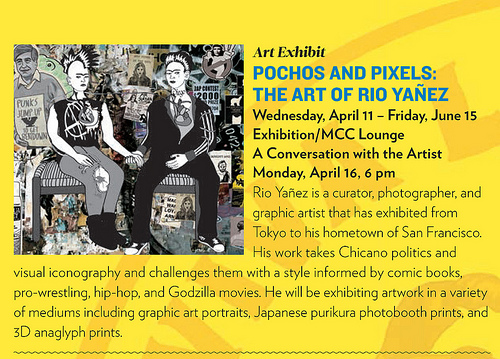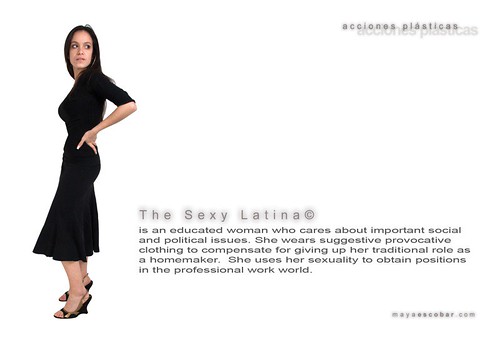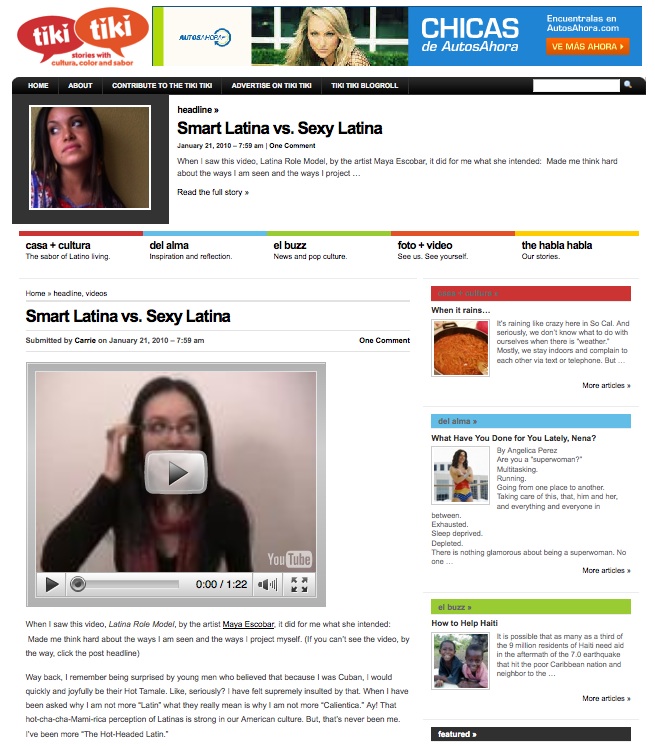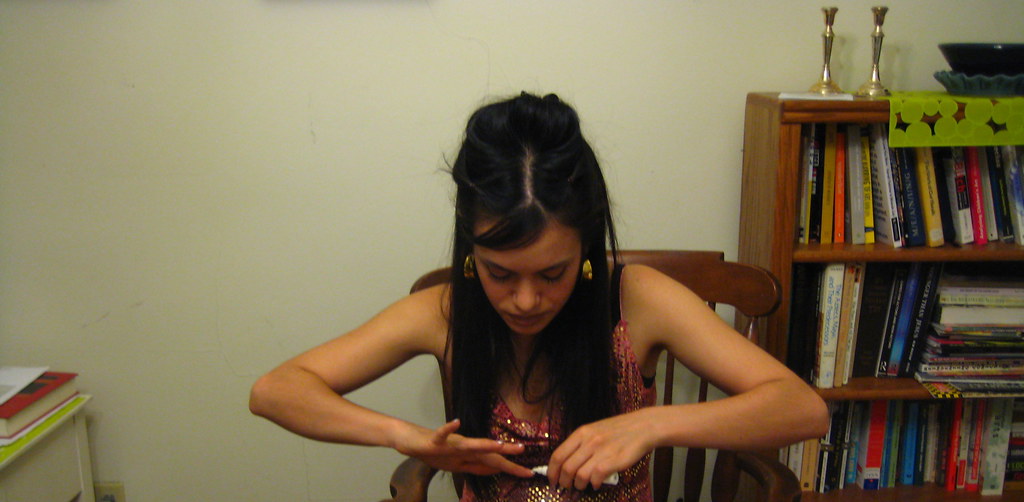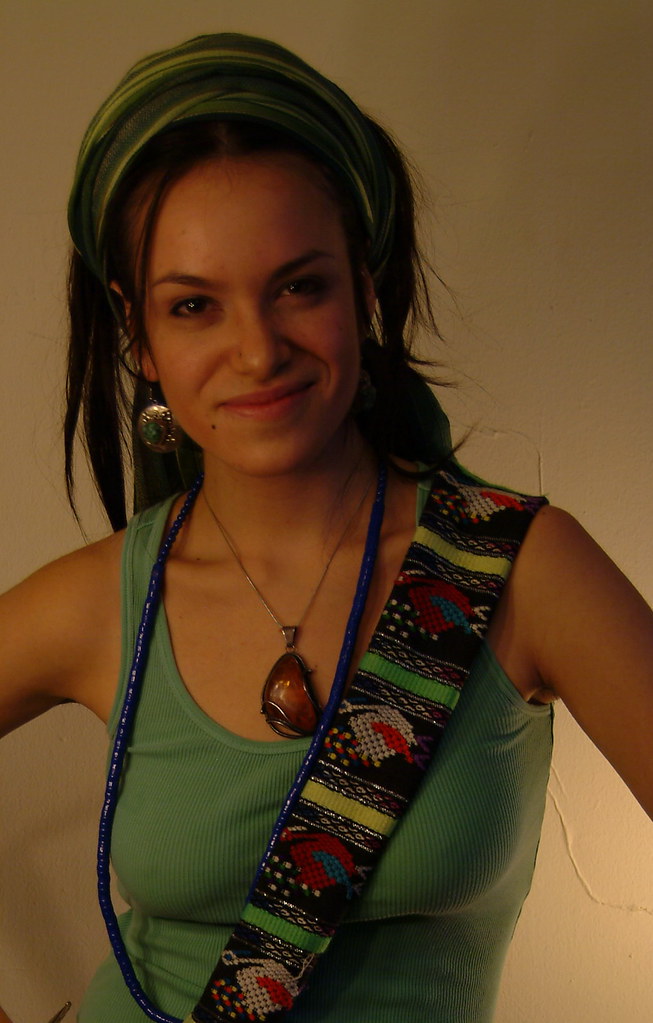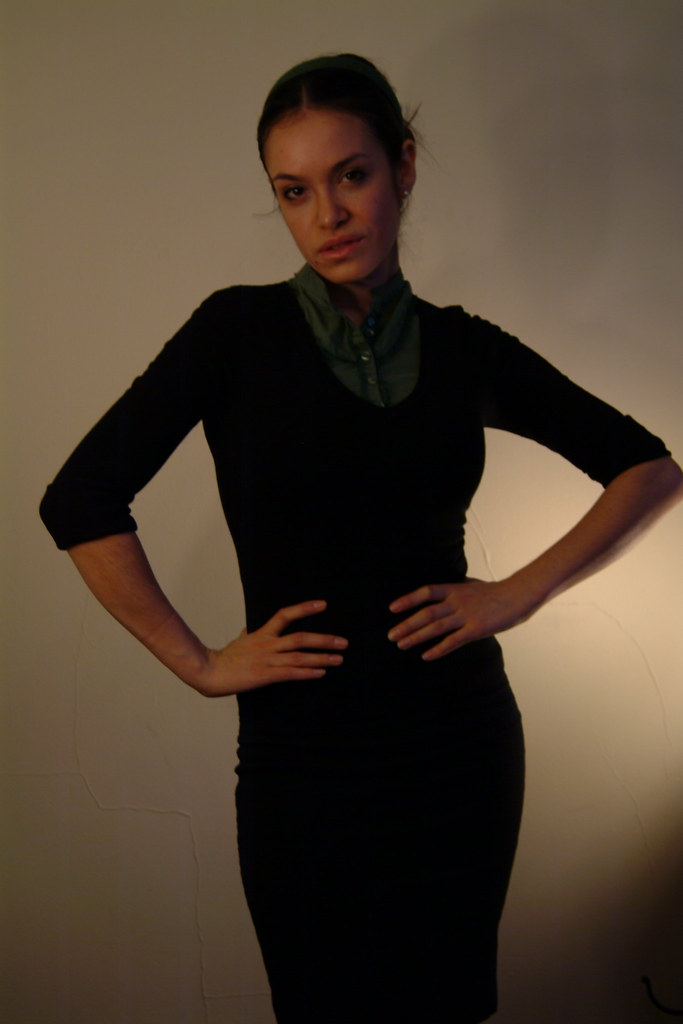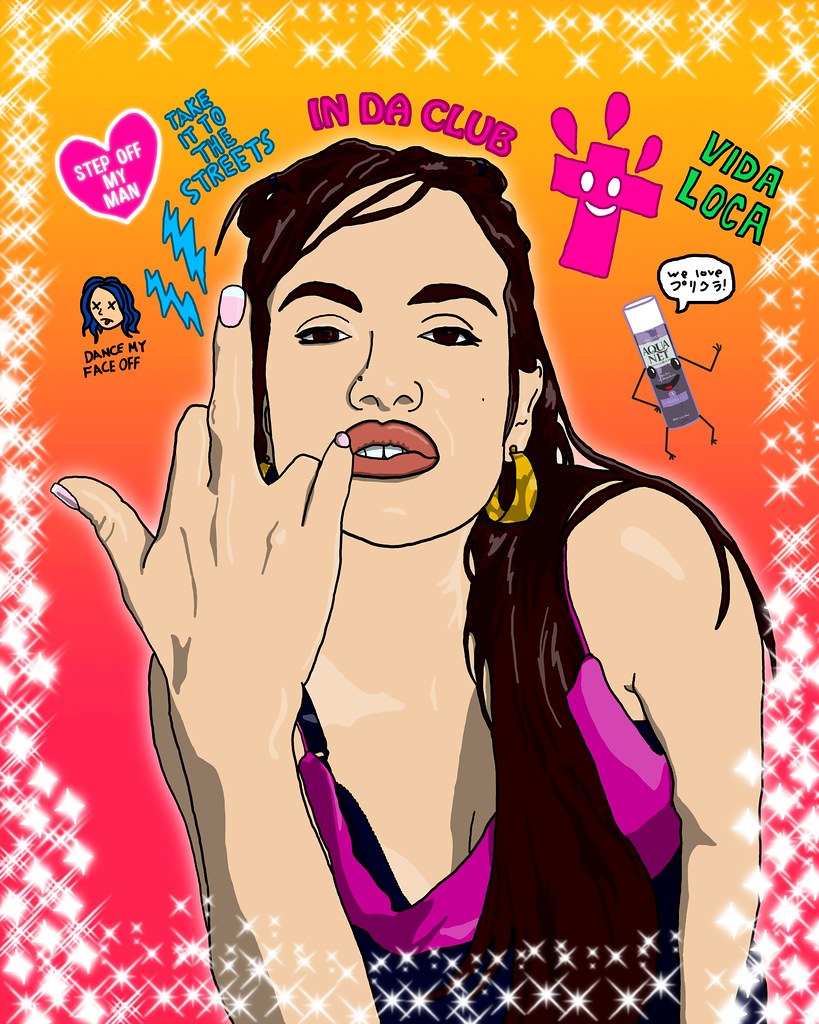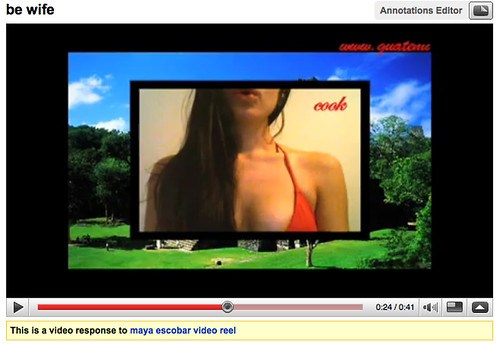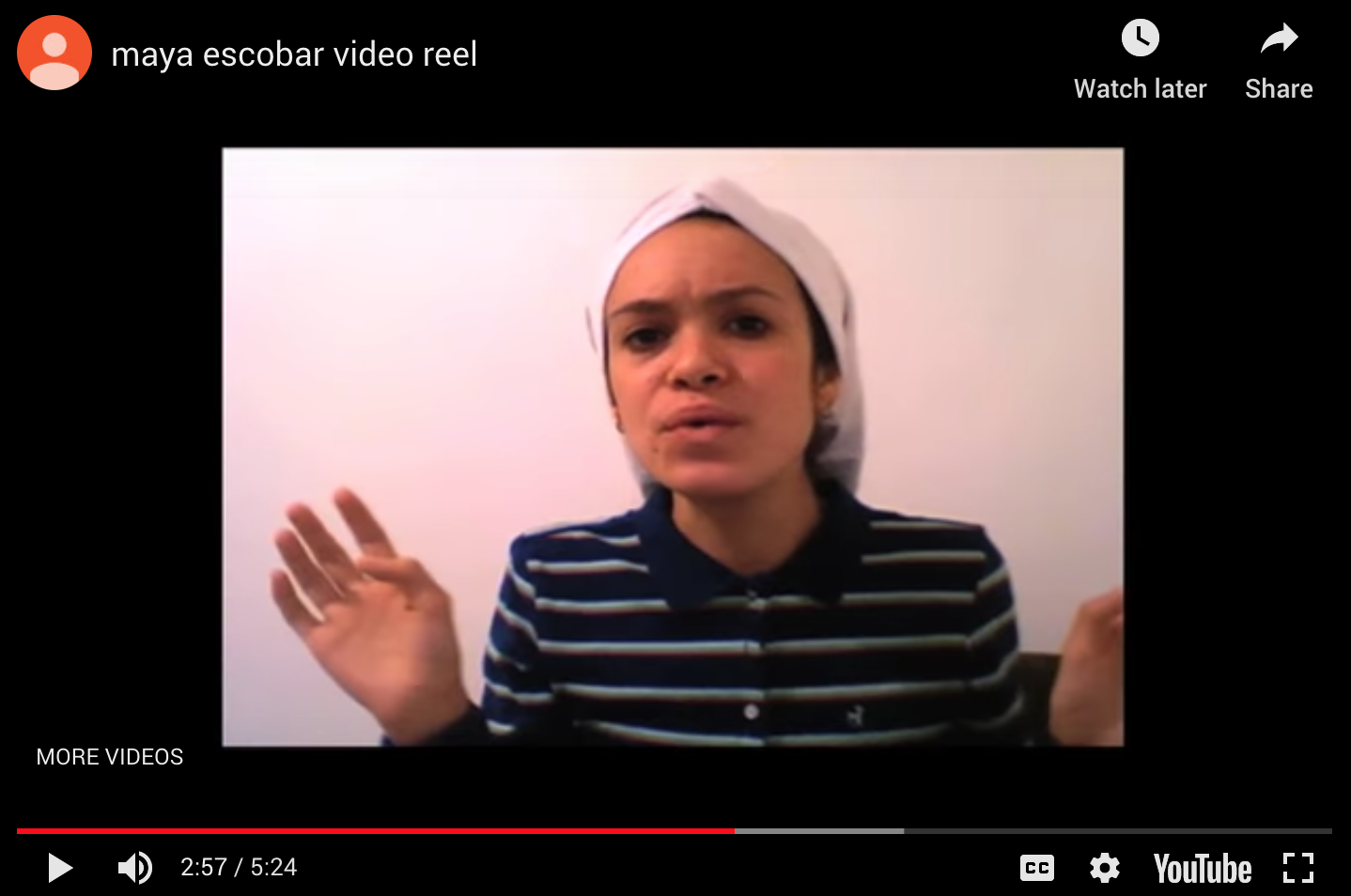Rio Yañez never ceases to amaze me... This time it's through his (FIRST!!!) solo exhibition, Pochos and Pixels: The Art of Rio Yañez. Just look at this dual punk rock meets hip hop (ghetto) Frida... Clearly, Rio is an artistic mastermind. WHAT: Pochos and Pixels: The Art of Rio Yañez.WHEN: Wednesday, April 11 – Friday, June 15 2012Monday-Friday: 8:00AM – 10:00PM,WHERE: UCSB Multicultural CenterUniversity Center room 1504Santa Barbara, CA 93106-6050
WHAT: Pochos and Pixels: The Art of Rio Yañez.WHEN: Wednesday, April 11 – Friday, June 15 2012Monday-Friday: 8:00AM – 10:00PM,WHERE: UCSB Multicultural CenterUniversity Center room 1504Santa Barbara, CA 93106-6050

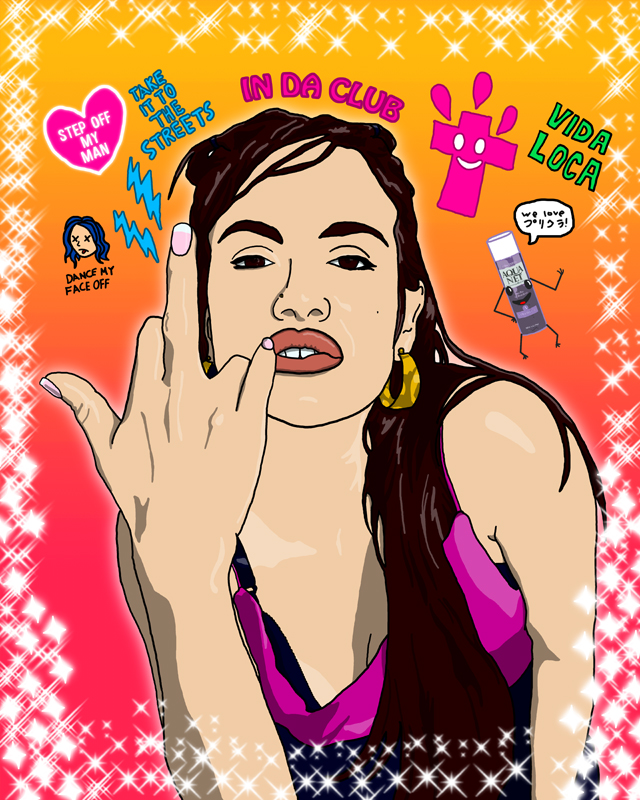 Acciones Plásticas プリクラ collaboration with Rio Yañez (2009)
Acciones Plásticas プリクラ collaboration with Rio Yañez (2009)
YouTube Video Reel
AM and I are applying to another residency!Unlike our current Wonder Woman Residency, where we applied as Escobar-Morales, this particular program does not accept joint proposals. So we are submitting seperately and hoping (and hoping and hoping) we will both be accepted.I am applying to the #InternetArt section.[youtube=http://www.youtube.com/watch?v=bk54gsndAQY]And she is applying to the Photo section.
Jewish Art as an Israeli Periphery
Acciones Plásticas in Fringes - Jewish Art as an Israeli Periphery
שוליים - אמנות יהודית כפריפריה ישראליתby David Sperber
The publication "Fringes - Jewish Art as an Israeli Periphery" is a continuation of a series of publications published under the auspices of the Leiber Center of Bar-Ilan University. The series focuses on research and documentation of contemporary Jewish art discourse in Israel. The series in general, and the current volume in particular, aim at sketching broad guidelines for topics pertinent to the field of Jewish art within the Israeli sphere.
The basic hypothesis of the current edition is that Judaism is conceived as a "subterranean" element of Israeli culture. The discussion considers the viability and elasticity of distinctions between the religious and the secular. This perspective favors a harmonic understanding, by which religiosity and secularism are not opposites, but rather intertwined inseparable concepts. Alongside the discussion concerning canonical artists, this publication relates mainly to peripheral tendencies and non-mainstream artistic groups, aiming to reveal their qualities as well as their limitations.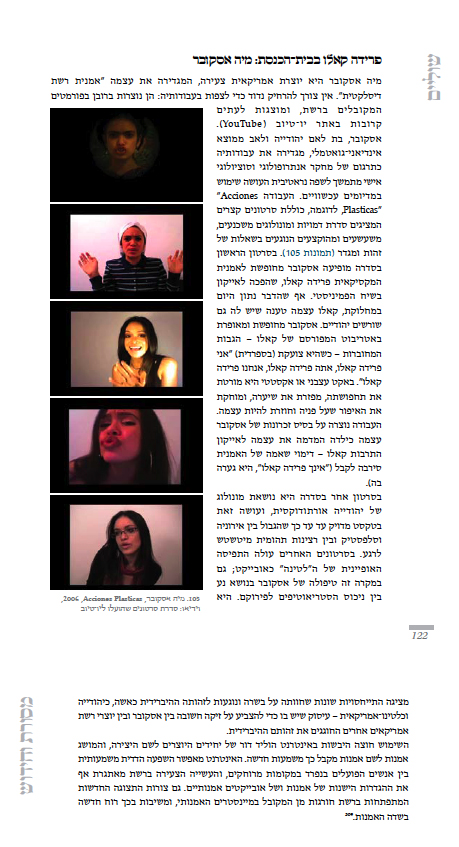
 Fringes -- Jewish Art as an Israeli Peripherypublished by Leiber Center of Bar-Ilan University
Fringes -- Jewish Art as an Israeli Peripherypublished by Leiber Center of Bar-Ilan University
Updating About Me
Maya Escobar is a conceptual identity artist.
______________________________
SELECTED STATEMENTS
______________________________
Bio for About Page 2010:Maya Escobar is a performance artist, Internet curator, and editor. She uses the web as a platform for engaging in critical community dialogues that concern processes by which identities are socially and culturally constructed. She performs multiple identities, sampling widely from online representations of existing cultural discourses. Her identifications as a Latina-Jewish artist, dyslexic blogger, activist and educator are indexed by the blogs she keeps, the visual and textual links she posts, the books, articles, and blog posts she cites, the public comments she leaves, and the groups she joins.Escobar received her MFA from the Sam Fox School of Design & Visual Arts, Washington University in St. Louis, and her BFA from the School of the Art Institute of Chicago. She has exhibited work in Spain, Guatemala, United States, Germany, Venezuela, and Chile.Twitter Bio for @Maya_Ate_This 2010:I am a 2nd generation Latina artist, nutrition buff, and fitness enthusiast. Here, I'll be tweeting what I am eating as well as sharing beauty and fitness tips.Artista Disléxica Del Internet pt 1 of audition video for Reality TV Show on Discovery En Español 2010:[youtube=http://www.youtube.com/watch?v=6T_8KzV8kLw]Short Bio for Acciones Plásticasプリクラ 2009:Maya Escobar is a Guatemalan-Jewish digital media and performance artist, currently living in St. Louis. Her work addresses issues of cultural hybridity, gender, placelessness, and the construction of identity.Bio for Conney Conference on Jewish Identity 2009:Maya Escobar is a Guatemalan Jewish digital media and performance artist. She received a BFA with an emphasis in Art Education from the School of the Art Institute of Chicago and is currently completing her MFA at Washington University in St. Louis. She can usually be found on the web blogging, tweeting, or youtubing. Escobar also serves as the online art editor for Zeek: A Journal of Jewish Thought and Culture. She has taught, performed and exhibited work in Germany, Spain, Guatemala, Puerto Rico and the United States.About Me for Maya E. on Jewish Wedding Network (2009):I have always lived between multiple worlds, I come from a Guatemalan Jewish American family of activists and educators. The planning of my wedding is like most things other things we do, a familiar and communal affair. In addition to the Bosa Nova band that will perform, my fiancee's band rock band Cavalry will be covering various Jewish tunes such as hava negilah and more.Breaking Down the Elephant Blog Post 2009:Some people think that I am the true representation of the elephant.It is true I am an elephant, but not the only elephant.I try to break up the conception of being the only elephant.Some people see a small portion of my work and think it is the whole- the representative elephant.Others understand that each piece connects to another piece and that individually they are only fragments.When breaking the elephant up into pieces, information slips in through the cracks.People also respond to this new information- creating a bigger more amorphous elephant.The amorphous elephant is broken up again and again, so that it is relevant to new individuals new experiences…Manifesto for MFA Thesis Exhibition Catalog 2009:As an artist and an individual, I am in constant conversation with the values transposed through multiculturalism. I seek to challenge notions of sameness, unity, and political correctness with pieces that affirm a sense of community for some, while paradoxically alienating others.Major influxes in international travel, technological advances, immigration, adoption, and intermarriage are causing the borders and boundaries between countries to merge together at an increasingly rapid pace. The imagined spaces of individual cultures are no longer autonomous.Therefore it is with a conscious move that I, and many colleagues and contemporaries, unapologetically go forward, breaking through traditional conceptions of art and artistic practice. No longer tied down to medium-specific practices, we produce work derivative of a multitude of discourses. The works that we produce, however, are distinct from those in the fields that our work represents. We are concerned with the past, but we will not allow the past to solely delineate the future. We hope to form a new definition of artistic practice that will include our constantly shifting environment.Short Web Bio for Stumble Upon 2008:MFA Candidate at Washington University in St. Louis. Current art/research centers around mental constructions of space and the social and political implications that result from these imagined boundaries. On this blog I share my random thoughts on hybridity, transnational and transcultural identities, liberal multiculturalism, critical pedagogy, feminist theory, latinidad, jewish life in america, youth culture...Bio for Acciones Plásticas at the Bruno David Gallery 2007:Maya Escobar is a Guatemalan Jewish interdisciplinary artist and educator. She is a recent graduate of the School of the Art Institute of Chicago, where she received a BFA with an emphasis in Art Education. She has taught, performed and exhibited work in Spain, Guatemala, Puerto Rico and the United States. Currently, Escobar is pursuing a MFA in Visual Arts at Washington University in St. Louis.Bio for Camp JRF 2007:Maya Escobar is a Guatemalan Jewish interdisciplinary artist and educator. She is currently completing her degree in Art Education at the School of the Art Institute of Chicago. Sharing her non-traditional approach to exploring Jewish identity, Maya will expose campers to a wide variety of contemporary artists, artistic mediums and processes. Campers will have the opportunity to work both independently and as a collective, to produce work that inspires and participates in ongoing personal and communal dialogue.Artist Statement 2006:Through the performance of actual and fictitious moments of my life, I explore my personal identity as the daughter of a Guatemalan father and Jewish mother. I compare the complexities of projected societal, cultural, and gender-determined roles to the lived experiences of Latina and Jewish women in our contemporary American culture. My work translates ongoing anthropological and sociological investigation into accessible narrative forms, incorporating technical skills in multiple mediums. As a commentary to the objectification and exoticization of otherness that I have personally experienced, I reclaim ownership of myself; I transform my body as well my “self” into an object used within the performed ritual, which is then documented through analog and digital photo, video and collage.
Jewish Women on DovBear
Last night @DovBear sent me this tweet:
@Mayaescobar posted your jewish women clip w\o realizing it was parody. A little too well done. ;)
I visited his blog and found a post on Jewish Women called Too much kool-aid. The comments generated by this post are really interesting and address the video from a multitude of perspectives.expert from his post:
"Aside: At the end, the woman on the film suggests that Jewish women who are dissatisfied with their back of the bus status secretly wish to be men. There's some truth to that, of course. Jewish women wish to be men in the same way that Jim Crow blacks wished to be white, meaning they want the same freedoms and opportunities that are available to men. Though Judaism has made much progress in this regard, the RW and Ultra circles still run like MadMen. Telling women they're more spiritual, pat pat, run along, is just a way to protect the status quo."
[youtube=http://www.youtube.com/watch?v=8H8mpau6dSc]
Jewish Women from the series Acciones Plásticas 2007
click here to see FULL POST and COMMENTS
selection comments posted below:
 zapp645if you follow the link-trail, it becomes clear that this video is likely making fun of the attitudes it depicts. so as right as what you say in this post is, it's not really aimed at this video...
zapp645if you follow the link-trail, it becomes clear that this video is likely making fun of the attitudes it depicts. so as right as what you say in this post is, it's not really aimed at this video... urielSo are you opposed to any distinction whatsoever between men and women in Judaism? Do you think we should get rid of the mechitza and the laws of niddah and negiah and tzniut because they all make distinctions between male/female and thus somehow discriminate against and oppress women? If so, why aren't you a Conservative Jew? If not, why not? What kinds of distinctions between men and women are not discriminatory in your book?The fact is, Judaism have a very conservative halachic process that makes it difficult or impossible to change most things. Do you think we should change that process to make it easier to make big changes? If so how is that different from the Conservatives?People mistakenly think that every explanation for distinctions between men and women must be some kind of conspiratorial justification for the status quo. But that's not true. You have to look at the history of the explanation. For example, consider shelo asani isha. The explanation is, women, slaves and gentiles don't have to perform certain mitzvot, so we're thanking Hashem for giving us more mitzvot to do. Conspiracy to trick people into thinking Judaism isn't sexist? No -- it's in the tosefta to the earlier version of the three berachot (which thanked Hashem for not making one an ignoramus.) So that supposedly "P.C." explanation was from before the mitzvah was even finalized!It's a mistake to think about Judaism in the same terms you think about American history. It's apples and oranges. If not, you'd be calling someone a "bigot" for not accepting the ordination of women, just like many liberals today will call you a bigot if you don't accept gay marriage. Of course bigot is an implicit reference to anti-black American racism. Which is a lot different from differing roles of the sexes in Judaism.
urielSo are you opposed to any distinction whatsoever between men and women in Judaism? Do you think we should get rid of the mechitza and the laws of niddah and negiah and tzniut because they all make distinctions between male/female and thus somehow discriminate against and oppress women? If so, why aren't you a Conservative Jew? If not, why not? What kinds of distinctions between men and women are not discriminatory in your book?The fact is, Judaism have a very conservative halachic process that makes it difficult or impossible to change most things. Do you think we should change that process to make it easier to make big changes? If so how is that different from the Conservatives?People mistakenly think that every explanation for distinctions between men and women must be some kind of conspiratorial justification for the status quo. But that's not true. You have to look at the history of the explanation. For example, consider shelo asani isha. The explanation is, women, slaves and gentiles don't have to perform certain mitzvot, so we're thanking Hashem for giving us more mitzvot to do. Conspiracy to trick people into thinking Judaism isn't sexist? No -- it's in the tosefta to the earlier version of the three berachot (which thanked Hashem for not making one an ignoramus.) So that supposedly "P.C." explanation was from before the mitzvah was even finalized!It's a mistake to think about Judaism in the same terms you think about American history. It's apples and oranges. If not, you'd be calling someone a "bigot" for not accepting the ordination of women, just like many liberals today will call you a bigot if you don't accept gay marriage. Of course bigot is an implicit reference to anti-black American racism. Which is a lot different from differing roles of the sexes in Judaism. NoPeanutzActually, oppressing women is the best reason to get rid of the mechitza. Nidda has nothing to do with this.And Tzniut has nothing to do with this. Tzniut has everything to do with social norms. Oppressive double-standard tzniut should be abolished immediately,
NoPeanutzActually, oppressing women is the best reason to get rid of the mechitza. Nidda has nothing to do with this.And Tzniut has nothing to do with this. Tzniut has everything to do with social norms. Oppressive double-standard tzniut should be abolished immediately, NoPeanutzAnd you do not have to be a Conservative Jew to understand this. You just have to be an Orthodox woman.
NoPeanutzAnd you do not have to be a Conservative Jew to understand this. You just have to be an Orthodox woman. AnonymousAFIK the mechitza is an outcropping of the orthodox halachic process. It is at least a universally (amongst orthodox) practice minhag. How would abolishing the mechitza be consistent with orthodox Judaism?I enjoy davening in my own (men's) section, because I would likely feel distracted/embarrassed by any attractive women in our shul standing next to me, hearing me sing, etc. I don't see how this translates into a desire on my part to oppress women. I'm sure there are men who wouldn't feel this way, and would probably daven just fine, just as there are young men, on the other side of the spectrum, who would maybe even ogle women. But it's impossible to satisfy everyone in a community.I agree that there are misogynists in Jewish communities, but I don't think allocating separate space to men and women in the synagogue automatically translates into oppressing women.
AnonymousAFIK the mechitza is an outcropping of the orthodox halachic process. It is at least a universally (amongst orthodox) practice minhag. How would abolishing the mechitza be consistent with orthodox Judaism?I enjoy davening in my own (men's) section, because I would likely feel distracted/embarrassed by any attractive women in our shul standing next to me, hearing me sing, etc. I don't see how this translates into a desire on my part to oppress women. I'm sure there are men who wouldn't feel this way, and would probably daven just fine, just as there are young men, on the other side of the spectrum, who would maybe even ogle women. But it's impossible to satisfy everyone in a community.I agree that there are misogynists in Jewish communities, but I don't think allocating separate space to men and women in the synagogue automatically translates into oppressing women. NoPeanutzIn most Orthodox shuls, I would agree that most mechitzot themselves are misogynistic.Buried in the back, or the corner, with an obstructed view of the proceedings.The purpose of the mechitza is to allow for the inclusion of women in the service. Not the exclusion.
NoPeanutzIn most Orthodox shuls, I would agree that most mechitzot themselves are misogynistic.Buried in the back, or the corner, with an obstructed view of the proceedings.The purpose of the mechitza is to allow for the inclusion of women in the service. Not the exclusion. urielThis wikipedia article seems to support your views, except for the citation of R' Hirsh (who might be hard to depict as a feminist). But the article may be leaving out earlier sources.http://en.wikipedia.org/wiki/Role_of_women_in_Judaism#Debates_within_Orthodoxy
urielThis wikipedia article seems to support your views, except for the citation of R' Hirsh (who might be hard to depict as a feminist). But the article may be leaving out earlier sources.http://en.wikipedia.org/wiki/Role_of_women_in_Judaism#Debates_within_Orthodoxy RubyVIt's part of a series called Acciones Plasticas by a Jewish Latina artist. http://mayaescobar.com/accionesplasticas.html It looks like an examination/satire of the stereotypes associated with her heritage.
RubyVIt's part of a series called Acciones Plasticas by a Jewish Latina artist. http://mayaescobar.com/accionesplasticas.html It looks like an examination/satire of the stereotypes associated with her heritage. E. FinkTITCR
E. FinkTITCR Sh'lomo'Whoah, that lady had the most steriotypical modeof Ashkenazi-Jewish speech I ever saw...
Sh'lomo'Whoah, that lady had the most steriotypical modeof Ashkenazi-Jewish speech I ever saw... DovBearUriel do you really and truly think everything frum Jews say and do is authentically Jewish? well guess again. The post is a critism of the man made culture, not the god decreed religion.
DovBearUriel do you really and truly think everything frum Jews say and do is authentically Jewish? well guess again. The post is a critism of the man made culture, not the god decreed religion. urielThe answer to your question is no. Will you answer my questions?
urielThe answer to your question is no. Will you answer my questions? urielLook at the quote from Rav Hirsh in the wikipedia article and you'll see that the idea that women are more spiritual than men is indeed authenticly Jewish (unless you see Rav Hirsch as some kind of pre-feminist apoogist). How old it is, I'm not so sure.
urielLook at the quote from Rav Hirsh in the wikipedia article and you'll see that the idea that women are more spiritual than men is indeed authenticly Jewish (unless you see Rav Hirsch as some kind of pre-feminist apoogist). How old it is, I'm not so sure. DovBearThe idea that women have a better nature or more spiritual is NOT authenticly Jewish. We know this because non Jews got fed the same horse manure as a way of keeping them satisfied with less. Look, I dont even know what youre arguing: The more right you go the worse off Jewish women are -in satmar they cant even drive and have to shave their heads. Thats an inrefutable facr.
DovBearThe idea that women have a better nature or more spiritual is NOT authenticly Jewish. We know this because non Jews got fed the same horse manure as a way of keeping them satisfied with less. Look, I dont even know what youre arguing: The more right you go the worse off Jewish women are -in satmar they cant even drive and have to shave their heads. Thats an inrefutable facr. urielThat's an odd way of proving something, you have to admit. I think a better way is to see how old an idea is. But even if it's not that old, if Rav Hirsh and Rav Aaron Soloveichik said it, I would say that's pretty authentic. Something doesn't have to be somewhere in the Mishnah to be authentic (though the older the more authentic). Much of kabbalah, mussar and chassidus would be inauthentic if that were your standard. At that point you'd be creating your own special denomination that is very picky and choosy about what in modern Judaism is authentic to you -- and that sounds like Reform.
urielThat's an odd way of proving something, you have to admit. I think a better way is to see how old an idea is. But even if it's not that old, if Rav Hirsh and Rav Aaron Soloveichik said it, I would say that's pretty authentic. Something doesn't have to be somewhere in the Mishnah to be authentic (though the older the more authentic). Much of kabbalah, mussar and chassidus would be inauthentic if that were your standard. At that point you'd be creating your own special denomination that is very picky and choosy about what in modern Judaism is authentic to you -- and that sounds like Reform. urielAre you saying Satmar is more authentic than other Jewish groups? Chazal surely had more contact with heretics and gentiles than Satmar does.
urielAre you saying Satmar is more authentic than other Jewish groups? Chazal surely had more contact with heretics and gentiles than Satmar does. E. FinkI think Zapp is right.
E. FinkI think Zapp is right.
This is a parody / satire for sure. She is NOT serious.
Also check out comments generated by a 2007 post by DovBear on Shomer Negiah Panties called Tzittzit for women?.
Latina Women Respond
Recently Latina Role Model was featured on TikiTiki Blog: stories with cultura, color and sabor, in a post by Carrie Ferguson Weir called Smart Latina vs. Sexy Latina. Carrie asked readers:
So, has your Smart Latina run up against the Sexy Latina? What do you see when you watch Maya’s video? What does it bring up for you? Why can’t we be both Smart and Sexy? Let’s talk about this, break it down, maybe shatter some stereotypes, and bust our own too.
Check out the PROFOUND difference in the nature of the comments left on this post (comments posted below) vs the ones left on YouTube.[youtube=http://www.youtube.com/watch?v=F_1X1igrL4U]my contribution to post on Tiki Tiki:
I perform over-the-top representations of different identities. I group together these representations (characters) as a means of challenging limited perspectives of what women are like, and in this case, what Latina women are like.
This character is supposed to be an intellectual, accomplished, socially conscious woman- who will forever be seen as the “Sexy Latina.” The low quality video blog is meant to mock scenes in movies, where the hot high school teacher walks down the hall and all the boys undress her in their minds.
But I am not taking a negative or positive stance either. I want to question the role Latinas play in perpetuating this persona, and question if that is even a bad thing? Are we limiting ourselves by continuing to have this same conversation, even though the behavior persists, are we enforcing it by bring more attention to it?
I haven't always been so impartial. Out of all of the characters in Acciones Plásticas, The Latina Role Model is the one I identified with the most. My original description of the way this character was perceived by others was much more reactionary and much angrier than it is now. (see below)
The Sexy Latina© from Acciones Plásticas free (stereotype) postcard, 2007
The Sexy Latina© is an educated woman who cares about important social and political issues. She wears suggestive provocative clothing to compensate for giving up her role as a homemaker. She uses her sexuality to obtain positions in the work world.
 Latina Role Model from Acciones Plásticas プリクラ 2009
Latina Role Model from Acciones Plásticas プリクラ 2009
Over the last two years this character has really evolved. Here is the new description of The Latina Role Model, re-imagined as part of my Acciones Plásticas プリクラ collaboration with artist Rio Yañez:
The Latina Role Model is a diploma totin’ intellectual, sexy, social media goddess.
What do you think? How does the earlier description of The Sexy Latina© differ from this new description of The Latina Role Model? How do these two images relate to the Latina Role Model YouTube video?
-
Sra. López says:
This is an excellent post and an excellent video. It really does make you think.I am really not qualified to speak from a “Latina perspective” on this topic because I am Anglo. (If you read my blog, you’ll know I’m Sra. López only because I married a Salvadoran.)That being the case, I can’t speak from personal experience on Latina stereotypes, but I would like to contribute an opinion or two on topics that are pretty closely related.For example, it really bothers me that the Latinas picked as reporters and journalists on Univision and Telemundo seem to be more for the purposes of eye candy than to report the news and add intelligent commentary — not that they aren’t intelligent women, but I think the sexism by the head honchos over there is pretty evident, not just on the news, but on other programming as well… And English language channels aren’t always much better. I think Western women in general – no matter what their race, fight very hard to overcome the sense that we are valued more as objects of sex/beauty, than for what’s inside.It’s very frustrating and I don’t envy the difficult job many women have of raising daughters in this world. (I have 2 sons) … With my own self esteem issues, I can’t imagine what a challenge it would be to raise a girl who is confident in herself and who doesn’t let Hollywood, fashion magazines, men, or even other females, get her down.I don’t know the solution to achieving true equality, but I think talking about it all is a good start.
-
Angelica Perez says:
Very interesting…The role model I immediately identified with was the socially-conscious, smart role model, which made me realize how loaded that role is. Being an accomplished and educated Latina comes with so many expectations — the whole giving back to the community, serving your community, being a role model and mentor for others, etc. — that’s not something that an accomplished non-Latina woman has to worry about (or feel committed to).With regards to the sexy role model — I always say that there is no sexier woman than the one that exudes confidence in herself and who she is — the sexy clothes are just extras…Great conversation…
-
[...] Tiki Tiki: Stories with Cultura, Color and Sabor, thanks to post by Carrie Ferguson Weir entitled Smart Latina vs Sexy Latina. Check out the post and be sure to leave your [...]
-
Ana Lilian says:
I guess I just never even thought of myself as the Sexy Latina…but a cute one yes! LOL! But once I´m on the dance floor, then the sexy comes out and it´s all good.But,seriously, I guess I just lack the perceived-Latina sassy-ness as I´ve never felt that bias towards me.I will definitely agree with dear Sra. López that the media, especially the Hispanic media, is completely promoting the hot Latina stereotype, and not much of the smart Latina one. Why do their “news” anchors feel they need to have their breast augmented to be taken seriously?
-
Kikita says:
I think it is inherent in our culture to be “hot” in every sense of the word because we are so passionate.I love what Maya was trying to accomplish and say with her video, but I found that she couldn’t hide or deny her Latin sensuality even when she was trying to play the part of an “intellectual, accomplished, socially conscious woman.”This DID make me stop and think, but what I realized is that I tend to shoot for a 3rd type. I go for “Classy Latina.” You know, the one that can wear the big hoops and sexy top with a pant suit. Someone like Ingrid Hoffman or Karla Martinez.
-
C. Morales says:
My impression is that Latina women play into the stereotype because Latino men often expect them to, and they are threatened by a smart woman. It is not just non-Latino men who expect a mujer caliente and nothing more.
-
Liz says:
How you project yourself, depends on you, no matter what. I, like Ana, never felt that I was looked at differently because I am Latina. I don’t see my self as a Sexy, Hot, Latina(I hope my husband does, though). Hell, I’m 33, been married for 12 years, and have 3 kids. I don’t get “chifles” anymore… ): LOL!This is directed towards the younger, single generation. How they present themselves as the future “Latina Generation”, depends on how they are raised. It’s up to us, as moms, to teach our daughters to go and be the BEST they can be. It’s up to me to raise my daughter to know what it right from wrong. Do guys really still think that girls are still destined to be “home/baby makers? Really??Forget Hollywood. Forget the Media. Heck, forget the evening news. If those ladies felt that they need to have their lady lumps hanging out in order to get the job, then I feel sorry for them. But, it is what it is.I will raise my daughter to know that education is the key to being classy and sexy! Not exposed Humps and Lady Lumps! Also, I will raise my boys to see women and they see themselves. Whether they marry a Latina or not.Ay, me pase de mas! he he!
-
SUZ says:
A smart and fun video commentary on the stereotypes of women in general…the educated intellectual, the hot babe, the innocent women. I like that Maya uses humor to deflect the extremes. Also that she creates a fine line between integrating the different role types. This is interesting because everyone is never just one thing…but we may choose to identify one way.
-
Melissa Garcia Logan says:
I think it’s part of a male dominated culture. Many women have this problem of having to manage male expectations in their professional lives, whether it is living with objectification or men projecting their need for nurturing from any woman they meet. I’ve had jobs where men thought it was okay to flirt with me and expected me to fulfill some messed up hot secretary fantasy, and I’ve had jobs where men I worked with expected me to be maternal and when I was driven, I was labeled aggressive. I’m not a dog, I’m not a hooker, and I’m definitely not your mother, guys.I think we have to teach men when they’re children that women can fill many roles and to expect them to be as capable and androgynous as any man performing the same duties. By the same token, I don’t know how I feel about using gender or sexuality as an asset to get ahead, my feeling is that anything you do that is manipulative in nature, is skirting unethical, if not flat out crossing the line.Having a sense of humor about stereotypes though, I don’t know if I see a problem as long as you don’t go too far and reinforce them. If it’s clear it’s a joke and part of the joke is how ridiculous stereotypical behavior really is…
-
 Carrie says:
Carrie says:I love the feedback, ladies. All great points and fabulous reflection.I am left wondering this, after reading Ana and Liz’s comments: Is stereotype/perception felt/seen at a greater level when we don’t live in predominately Latino communities?This comes to mind because your comments made me realize I never thought too much of my Latina side and my American side until I lived in cities where there weren’t a bunch of Cubans running around me everywhere. My otherness was apparent and pointed out. It was almost like, wow, I am different?Interesting!
-
Marta says:
I don’t fit into the Sexy or Brainy Latina mold at all. Probably because I look very Anglo – light skin, blue eyes. I blend pretty seamlessly into my So Cal suburban life.Except for the Latina “chispa.” That’s always the big giveaway right there. =D
-
Liz says:
Carrie,I emailed your post to my niece, whose studying at Penn State, this is what she had to say:Well, I agree with her lol. A lot of people especially here in Pennsylvania, see me as exotic because I’m Hispanic. They expect me to speak Spanish all of the time and a lot of them expect me to be kinda stupid and slutty. But when people get to know me, they find out that I’m extremely smart. Smarter than most people they encounter. And it sucks because I’m always having to prove myself to people and to teachers. But in the end, I’m the one that’s dropping jaws for my intellect and not for my attractiveness =)The end haha. Hope that helps.I am one PROUD Tia!!! (:
-
 Carrie says:
Carrie says:Liz, aha! Thank you for sending the post to your niece and validating my theory. I love how your niece wrote to you and the “stupid and slutty” line made me bust out laughing — especially because she obviously is not.Gracias, proud Tia!(Maybe she needs to write for the Tiki Tiki? hmmmm?)
-
Veronica says:
Great video and excellent points.I think that this expectation for Latinas to appear sexy is one reason why I reject the hot mom movement. I wish there was just as much social pressure to be smart Latinas, smart moms, smart women as there is to be hot, sexy, etc.
Latina Role Model on Tiki Tiki
Latina Role Model is on Tiki Tiki: Stories with Cultura, Color and Sabor, thanks to post by Carrie Ferguson Weir entitled Smart Latina vs Sexy Latina. Check out the post and be sure to leave your responses!
behind the scenes acciones plásticas purikura
Here are some behind the scenes images from the many Acciones Plásticas プリクラ photo shoots.
The Latina Hipster
The Homegirl
The Homegirl putting on fake nails (lovin' the shabbos candlesticks and theory books in the background)
The Avodah Girl
The 612er
---------------------------------------------------------
Check out this inspiring write-up on Acciones Plásticas プリクラ on Truth and Healing Project.excerpt below:
goodness. I’ve been thinking a lot about the intersections between new media and traditional forms of knowledge and how these intersections can be ways of supporting tradition, innovation, resistance and liberation. As a media-maker, I’ve thought a lot about non-traditional forms of telling stories and the value of stories to allow us as individuals and communities to grow and remain in movement. I want to both honor our traditions and create space for challenge in order to support growth. This is particularly challenging when, as indigenos, we are usually FORCED into the frozen stance (as my sister Whisper says) of the “American Imaginary”. Born out of a flat analysis, the “American Imaginary” boxes us into specific archetypes and narratives that, though perhaps grounded in truth, metaphorically and at times literally “freeze” us and immobilize us from engaging in healthy movement and LIFE. As a guatemalan-born/ mixed -id’d/ mayan-adoptee I’ve dreamed about new and innovative ways to create forums and craft form that embodies the intersections of say, mayan id, transracial queer, working class, single teen mama id. For example, as a queerasfuck femme I’ve LITERALLY dreamed of beginning a series of corsets created out of huipil’s with stories attached to each… though I have yet to begin work on that. I am so excited by the thoughts of spaces for dialogue, beauty, challenge & examination of the COMPLEX identities embodies by the our contemporary indigena communities. . Fierce and phenomenal chicana and radical latina artists have had HUGE impacts on me but I’ve been hungry to see this come from other guatemelan/ mayan artists. Today, I got a taste of a contemporary and GUATEMALAN artist who is actively engaged in a similar examination! I came across this blog (and art work) and it was as if an answer was given to me in the form of possibilities. A sweet affirmation that this form of mayan/guatemalan art CAN and DOES exist.
rio prayed for la virgen de guadalupe and instead got...
If I haven't mentioned it before, I am quite the fan of awful horrible animated gifs. As I continue to work with seeNoga and Rio Yañez on the Jewish characters from Acciones Plásticas プリクラ: The Jewess Blogging Queen, The Avodah Girl and The 612er; I thought I would share this terrible image created early on in our collaboration. There is also another version (which I can no longer find) where in last frame of the gif sequence, it rains diet cokes. :)
acciones plásticas goes プリクラ chicano style
Acciones Plásticas プリクラ
Acciones Plásticas プリクラ is a collaboration between artists Maya Escobar and Rio Yañez.
 The Latina Hipstera bad-ass Morrissey-lovin’, tuff-girl sexy chica
The Latina Hipstera bad-ass Morrissey-lovin’, tuff-girl sexy chica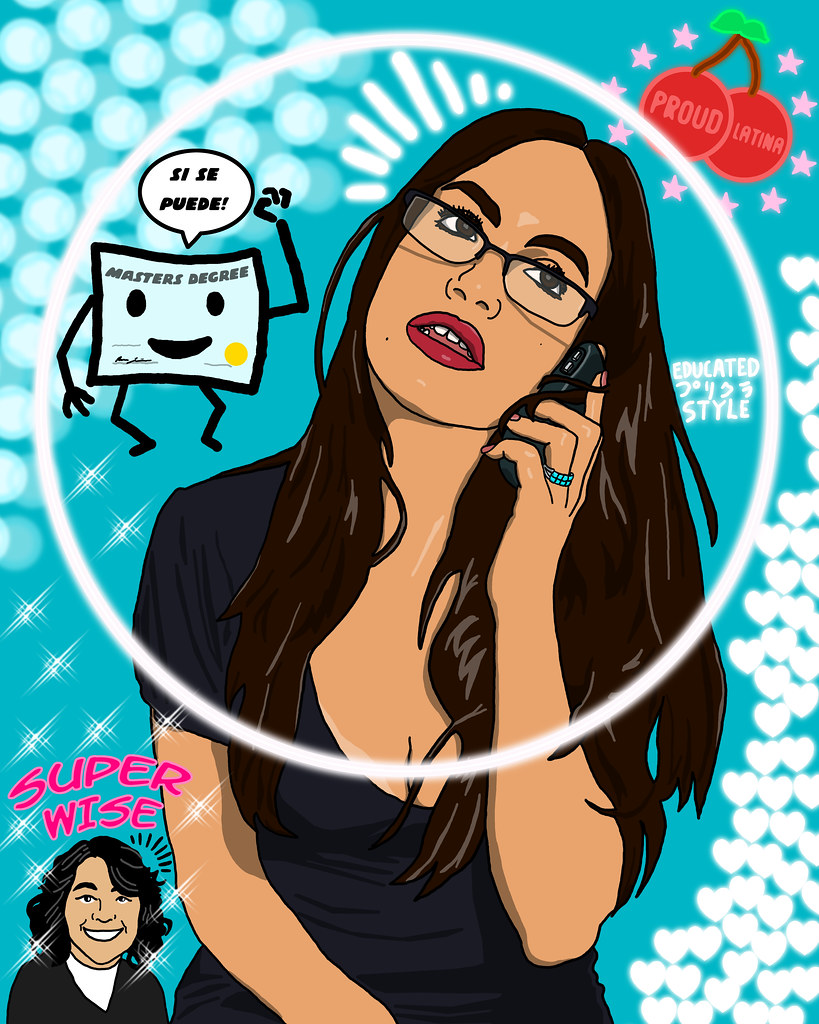 The Latina Role Modela diploma totin’ intellectual, sexy, social media goddess
The Latina Role Modela diploma totin’ intellectual, sexy, social media goddess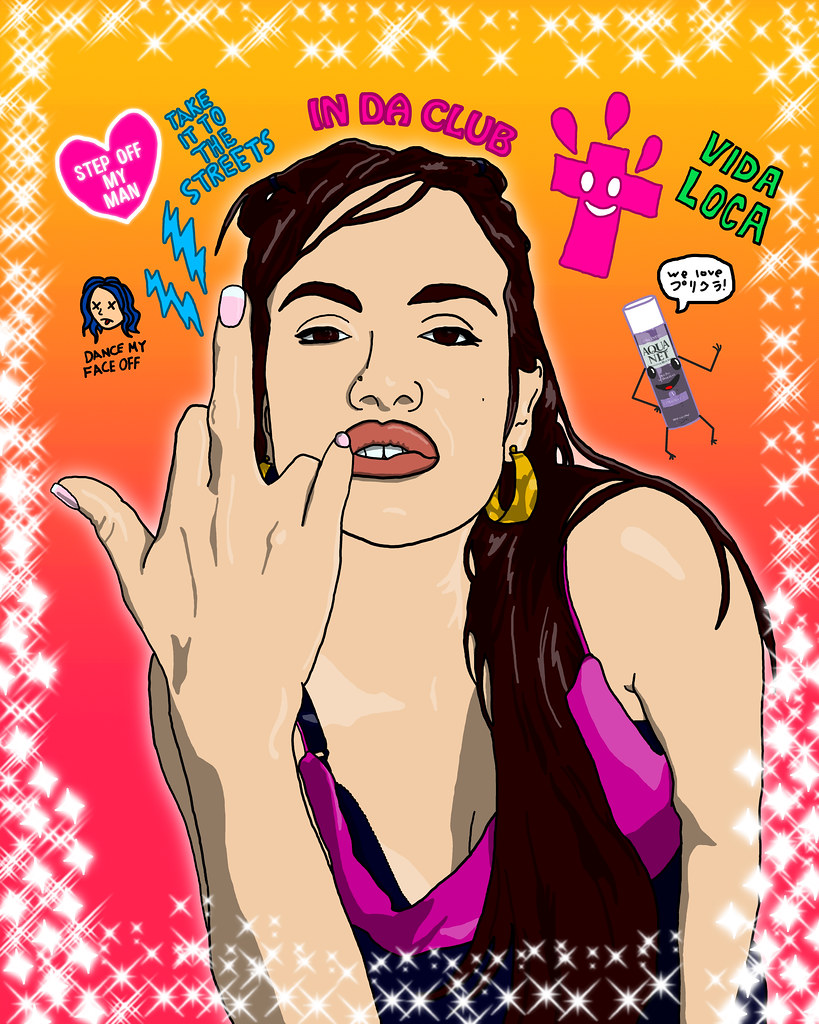 The Homegirla hybridized version of Escobar’s Midwestern Chach and Yañez’s West Coast Chola.In Acciones Plásticas Escobar created a multi-faceted “doll” by assuming the role of designer and distributor, and even posing as the actual doll itself. Each doll was a satirical characterization of some of the many roles that have been projected upon her, and into which she has, at points, inevitably fallen. In conjunction with these images, she developed a short series of low-definition youtube video blogs through which she inhabits the lives of “real women” who have each been visibly defined by societal constructs.Recently, Yañez has been utilizing Japanese photobooths (known as Purikura or “print-club”) as an artist’s tool for creating portraits. These booths are much more common in Japan than their United States counterparts. As a catalyst for creative expression and social interaction they are used primarily by young urban Japanese girls. A standard feature in all Purikura booths allows the user to digitally decorate their portraits after they take them. The options are vast and include wild characters, excessive starbursts of light, pre-made phrases and the option to draw your own text directly on the image. Purikura gives the subjects near-divine powers of self-expression in crafting their own portraits.The two artists who met over the web, decided to bring together Escobar’s highly charged and evocative Acciones Plásticas characters with Yanez’s notorious Chicano graphic-art style and new found obsession with Purikura images, as a way of addressing the construction of Latina identities.Maya posed as The Latina Hipster: a bad-ass Morrissey-lovin’, tuff-girl sexy chica; The Latina Role Model: a diploma totin’ intellectual, sexy, social media goddess; and finally, The Homegirl: a hybridized version of Escobar’s Midwestern Chach (or Chachi Mama) and Yañez’s West Coast Chola. Maya sent digital images to Rio, who in turn drew portraits of her as each of these constructed identities. He approached each portrait with a Purikura sensibility and decorated them each as the characters represented might accessorize themselves. The final series of portraits is the result of negotiating multiple identities and influences. Guatemalan, Jewish, and Chicano sensibilities reflected back through a Japanese Purikura aesthetic. Acciones Plásticas プリクラ challenge and question the thin line between archetype and stereotype. The Purikura elements present the novel signifiers of each social construct represented in the series.This collaboration is the first of many to come as Maya and Rio explore the commonalities and differences of their cultural identities.For more information on Acciones Plásticas プリクラcheck out Rio's blog and stay tuned for guest post by seeNoga aka Carianne Noga on meeting the Chach Homegirl in real life.(video of the Chach featured below)[youtube=http://www.youtube.com/watch?v=Xj3Q42YF40Y]
The Homegirla hybridized version of Escobar’s Midwestern Chach and Yañez’s West Coast Chola.In Acciones Plásticas Escobar created a multi-faceted “doll” by assuming the role of designer and distributor, and even posing as the actual doll itself. Each doll was a satirical characterization of some of the many roles that have been projected upon her, and into which she has, at points, inevitably fallen. In conjunction with these images, she developed a short series of low-definition youtube video blogs through which she inhabits the lives of “real women” who have each been visibly defined by societal constructs.Recently, Yañez has been utilizing Japanese photobooths (known as Purikura or “print-club”) as an artist’s tool for creating portraits. These booths are much more common in Japan than their United States counterparts. As a catalyst for creative expression and social interaction they are used primarily by young urban Japanese girls. A standard feature in all Purikura booths allows the user to digitally decorate their portraits after they take them. The options are vast and include wild characters, excessive starbursts of light, pre-made phrases and the option to draw your own text directly on the image. Purikura gives the subjects near-divine powers of self-expression in crafting their own portraits.The two artists who met over the web, decided to bring together Escobar’s highly charged and evocative Acciones Plásticas characters with Yanez’s notorious Chicano graphic-art style and new found obsession with Purikura images, as a way of addressing the construction of Latina identities.Maya posed as The Latina Hipster: a bad-ass Morrissey-lovin’, tuff-girl sexy chica; The Latina Role Model: a diploma totin’ intellectual, sexy, social media goddess; and finally, The Homegirl: a hybridized version of Escobar’s Midwestern Chach (or Chachi Mama) and Yañez’s West Coast Chola. Maya sent digital images to Rio, who in turn drew portraits of her as each of these constructed identities. He approached each portrait with a Purikura sensibility and decorated them each as the characters represented might accessorize themselves. The final series of portraits is the result of negotiating multiple identities and influences. Guatemalan, Jewish, and Chicano sensibilities reflected back through a Japanese Purikura aesthetic. Acciones Plásticas プリクラ challenge and question the thin line between archetype and stereotype. The Purikura elements present the novel signifiers of each social construct represented in the series.This collaboration is the first of many to come as Maya and Rio explore the commonalities and differences of their cultural identities.For more information on Acciones Plásticas プリクラcheck out Rio's blog and stay tuned for guest post by seeNoga aka Carianne Noga on meeting the Chach Homegirl in real life.(video of the Chach featured below)[youtube=http://www.youtube.com/watch?v=Xj3Q42YF40Y]
take a picture of me for my myspace
In October of 2006 my rabbi started blogging. While trying to comment on one of his posts, I accidentally registered my own blog. Within hours of posting a comment, my name began appearing in Google searches. I was now linked to the post I had commented on, previous posts my rabbi had written, comments left by other users and the posts they had written elsewhere within the blogosphere. The rapidity with which I was branded, not only by my own online activity, but also by the online activity of others, seemed incomprehensible. I thought about this phenomenon in relationship to, the images that my friends and I had posted on Myspace throughout that year. I unknowingly went from being slightly annoyed and simultaneously amused by the phrase "take a picture of me for my Myspace", to it becoming completely natural and almost organic to document every moment, every outing, every time my friends and I put on make up, and to take pictures for Myspace. I saw this behavior even further exaggerated in the high school students I was student teaching. Their conversations were dominated with events that had transpired on Myspace, and when they were not talking about Myspace they were taking pictures for Myspace.When we talked about the factors that contributed to the construction of their individual and collective identities, my students were quick to bring up their style of dress, group of friends, the neighborhood they lived in, and the way they spoke. Yet not a single student referenced their online activity, the pictures they posted, the groups they joined, the comments they left on each others pages. I wondered why it was, that they were so aware of and adept at reflecting upon their experiences in the material offline world, but failed to mention the social network that played such a major role in their day-to-day lives.DECONSTRUCTING PERSONAL IDENTITY
I thought about this phenomenon in relationship to, the images that my friends and I had posted on Myspace throughout that year. I unknowingly went from being slightly annoyed and simultaneously amused by the phrase "take a picture of me for my Myspace", to it becoming completely natural and almost organic to document every moment, every outing, every time my friends and I put on make up, and to take pictures for Myspace. I saw this behavior even further exaggerated in the high school students I was student teaching. Their conversations were dominated with events that had transpired on Myspace, and when they were not talking about Myspace they were taking pictures for Myspace.When we talked about the factors that contributed to the construction of their individual and collective identities, my students were quick to bring up their style of dress, group of friends, the neighborhood they lived in, and the way they spoke. Yet not a single student referenced their online activity, the pictures they posted, the groups they joined, the comments they left on each others pages. I wondered why it was, that they were so aware of and adept at reflecting upon their experiences in the material offline world, but failed to mention the social network that played such a major role in their day-to-day lives.DECONSTRUCTING PERSONAL IDENTITY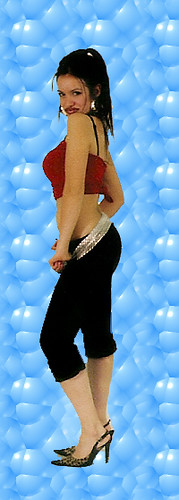 (today) I am referring to myself as a performance artist, Internet curator, and editor. I create and (concurrently) perform multiple online identities, by sampling from different representations of existing cultural discourses. I fragment my personal experiences and invite others to join in, and modify and regroup those fragments. By doing this I hope to share the process through which I deconstruct and reconstruct my individual conception of self, so that others can do the same in their lives.In the series Acciones Plásticas I performed representations of five constructed characters: a religious Jewish woman, a spoiled Jewish girl, a ghetto Latina, a sexy Latina professor, and a Mayan woman. I created low quality YouTube video blogs for four of the characters, the Mayan woman did not have a video, as she would not have had access to YouTube technologies. The videos were strategically placed on popular social networking sites, including YouTube and MySpace. The layout of YouTube contextualized the videos and framed them with user comments and similarly tagged user content. Jewish Girls was picked up by a popular left-wing Jewish blogging site Jewschool, and soon entered the Jewish Blogosphere where it was referred to as the JAP. This repositioning shifted the focus from the portrayal of multiple interwoven identities to a depiction of the Jewish American Princess. The JAP became how people knew my work, validating me while simultaneously conflating my identity with that of this particular character.
(today) I am referring to myself as a performance artist, Internet curator, and editor. I create and (concurrently) perform multiple online identities, by sampling from different representations of existing cultural discourses. I fragment my personal experiences and invite others to join in, and modify and regroup those fragments. By doing this I hope to share the process through which I deconstruct and reconstruct my individual conception of self, so that others can do the same in their lives.In the series Acciones Plásticas I performed representations of five constructed characters: a religious Jewish woman, a spoiled Jewish girl, a ghetto Latina, a sexy Latina professor, and a Mayan woman. I created low quality YouTube video blogs for four of the characters, the Mayan woman did not have a video, as she would not have had access to YouTube technologies. The videos were strategically placed on popular social networking sites, including YouTube and MySpace. The layout of YouTube contextualized the videos and framed them with user comments and similarly tagged user content. Jewish Girls was picked up by a popular left-wing Jewish blogging site Jewschool, and soon entered the Jewish Blogosphere where it was referred to as the JAP. This repositioning shifted the focus from the portrayal of multiple interwoven identities to a depiction of the Jewish American Princess. The JAP became how people knew my work, validating me while simultaneously conflating my identity with that of this particular character.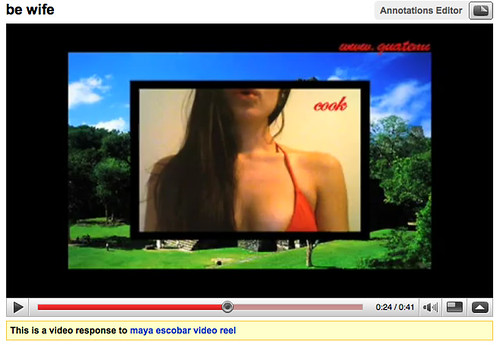 One of the strategies that I employed to counteract idea of "me as The JAP" was to group videos from the series Acciones Plásticas together with three other Youtube videos in a video reel of my work. The first video in the reel, el es frida kahlo is me dressed as Frida Kahlo where I violently scream I am Frida Kahlo! In second video Be Wife, I wear a bright red bikini top in front of an image of a Mayan temple in Tikal. Traditional Guatemalan marimba music plays in the background, while red text scrolls across the top reading Guatemala's finest export. The third video Que Sencilla, features me as a little girl, who is being coaxed by an off-camera male voice to perform a dance for the camera.Someone who is expecting to see a Jewish American Princess, is instead greeted with an enraged
One of the strategies that I employed to counteract idea of "me as The JAP" was to group videos from the series Acciones Plásticas together with three other Youtube videos in a video reel of my work. The first video in the reel, el es frida kahlo is me dressed as Frida Kahlo where I violently scream I am Frida Kahlo! In second video Be Wife, I wear a bright red bikini top in front of an image of a Mayan temple in Tikal. Traditional Guatemalan marimba music plays in the background, while red text scrolls across the top reading Guatemala's finest export. The third video Que Sencilla, features me as a little girl, who is being coaxed by an off-camera male voice to perform a dance for the camera.Someone who is expecting to see a Jewish American Princess, is instead greeted with an enraged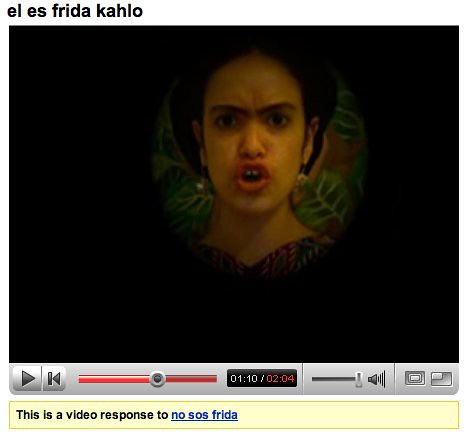 Latina artist, trying to fight the stigma of being associated with Frida Kahlo. My inclusion of these additional videos was to show the multidimensionality of the five characters initially presented in Acciones Plásticas. The Mayan women does not have her own YouTube video, but with the addition of the Be Wife video, her absence is felt even greater. The face of Guatemala in these videos, is the chest of a mail order bride. Another example can be seen within the four original videos themselves. With the grouping of the ghetto latina with the sexy latina professor, vast cultural and class difference can be seen between the two representations of Latina women. Put together with el es frida kahlo and Be Wife, there are suddenly five Latina performers all acting on one stage.
Latina artist, trying to fight the stigma of being associated with Frida Kahlo. My inclusion of these additional videos was to show the multidimensionality of the five characters initially presented in Acciones Plásticas. The Mayan women does not have her own YouTube video, but with the addition of the Be Wife video, her absence is felt even greater. The face of Guatemala in these videos, is the chest of a mail order bride. Another example can be seen within the four original videos themselves. With the grouping of the ghetto latina with the sexy latina professor, vast cultural and class difference can be seen between the two representations of Latina women. Put together with el es frida kahlo and Be Wife, there are suddenly five Latina performers all acting on one stage.
Jewish Girls Youtube Comments
Jewish Girls from the series Acciones Plásticas
[youtube=http://www.youtube.com/watch?v=GBjBN0ftcP0]Responses to Jewish Girls
[youtube=http://www.youtube.com/watch?v=PQphBV2Q0ZE]
Artista disléxica del Internet
Por David Sperber en Ma’arav Israeli Arts and Culture MagazineTraducción de Gonzalo Escobar (de Traducción de Shlomit Nehorai)Maya Escobar es sin ninguna duda una de las personas más de moda en el desarrollo del arte judío-estadounidense. Escobar se define como “artista disléxica del Internet”. Y para ver su trabajo uno no necesita ir muy lejos.Su trabajo es creado principalmente en el formato familiar del Internet, y se puede ver más frecuentemente en Youtube. Escobar es hija de madre Judía y de padre Guatemalteco, ella define su trabajo personal y versátil de arte como una investigación antropológica-sociológica dentro de la narrativa que utiliza medios electrónicos contemporáneos.Acciones Plásticas incluye películas de corto metraje que presentan una serie de caracteres persuasivos y monólogos en los que se cuestiona la identidad. En la primera película de corto metraje de la serie aparece, vestida como la artista mexicana Frida Kahlo quien se convirtió en un ícono dentro del discurso feminista. Se argumenta comúnmente que Kahlo tenía algunas raíces judías. Escobar aparece vestida como Kahlo con sus famosas cejas mientras que grita “Yo soy Frida Kahlo. Usted es Frida Kahlo. Nosotros somos Frida Kahlo”. En agitación o en éxtasis se desgarra su ropa, se despeina, se quita el maquillaje y vuelve a ser ella misma.[youtube=http://www.youtube.com/watch?v=xlMPoFXRT18]
En la otra película de corto metraje de la serie, ella continúa con un monólogo de una mujer ortodoxa judía. El texto aquí es tan exacto que por un minuto la línea entre la ironía y la comedia burda y la seriedad profunda es borrosa.[youtube=http://www.youtube.com/watch?v=8H8mpau6dSc]En otra película de corto metraje se presenta el estereotipo de mujer latina como objeto sensual sexual, cuando aquí el tema se desenvuelve también entre la aprobación y la destrucción de los estereotipos. Escobar presenta diversos episodios basados en la realidad que ella misma ha experimentado enfocados en su identidad híbrida como mujer, como judía y como latinoamericana.[youtube=http://www.youtube.com/watch?v=F_1X1igrL4U]Otro trabajo de Escobar es My Shtreimel (Mi sombrero de peluche judío de Europa Oriental) - un vídeo-blog que también se puede encontrar en Youtube. En esta sección aparece un joven de más de veinte años que está sentado frente a una computadora y habla de sus rituales del Shabbat (el día de descanso para los judíos). El monólogo describe un mundo judío amorfo en el cual la esencia judía viva y material no es obligatoria a sus instituciones, sobre todo en el marco personal. Una parte central en este mundo es la auto depreciación de uno mismo: El joven muestra su querido shtreimel y menciona que el shtreimel que se ve como el sombrero tradicional es realmente un sombrero de mujer comprado en una tienda de segunda.
En el trabajo “eruv”* (entremezclarse) Escobar relata el hecho que en Berlín no hay ningún eruv aun cuando allí existe una comunidad judía vibrante. En una serie de entrevistas fotografiadas con los habitantes de la ciudad ella transforma la noción del eruv - en una noción legal halajá (recopilación de las principales leyes judías) que crea una transformación del espacio público en el espacio privado, en una mezcla - la creación múltiple de caracteres y de mundos. El eruv se transforma en un concepto cultural que celebra lo diferente y lo único. Los individuos crean un mosaico espléndido que ensambla un grupo “colectivo” diferente como concepto social. La forma en que Escobar trata el tema es típico al mundo judío-estadounidense del arte que tiende a transferir los conceptos del halajá práctico y para transferirlo a otro mundo, y así se transforma en una metáfora de la condición personal o social. La experiencia personal es significativa a Escobar. Como otros rituales judíos, el Shabbat abarca los sentidos prácticos que materializan la condición privada en un espacio privado. Excepto que el entendimiento del espacio privado y del espacio público es fluido y cambia siempre. Yo pienso que es muy importante de que la gente celebre su Shabbat como experiencia agradable, definida y personal. Los rituales del Shabbat evolucionan con el tiempo - no como obligación inamovible que se transfiere de generación en generación, pero como resultado de una opción simple del individuo de crear él/ella las mismas costumbres agradables de Shabbat. Todos tenemos esta clase de costumbres.”El uso intercontinental del Internet dio a luz a una generación de individuos que crean algo solo por el hecho de crear algo, y el concepto del crear arte por el hecho del crear arte consigue de esa manera un nuevo significado. Los medios de comunicación del Internet conectan a individuos y contribuyen mutuamente a entrelazar a la gente que trabaja por separado en lugares lejanos. El trabajo nuevo del Internet desafía las viejas definiciones en lo referente a lo qué se considera arte y a lo que no es. De igual manera, adopta nuevas formas de la presentación que no son la norma en la corriente principal del mundo del arte, y le revigoriza al campo del arte.La discusión del trabajo de Escobar conduce a una discusión más amplia sobre las diferencias entre el pensamiento judío en la conversación israelita en la nueva comprensión de la opinión estadounidense del mundo. El compromiso judío-artístico en los Estados Unidos está influenciado por la introducción de las ideas de la nueva era en el centro de la conversación, y está integrando en el esfuerzo de crear una conexión entre la cultura contemporánea y la identidad judía tradicional. Dentro de la comunidad estadounidense-judía hay muestras de un movimiento de una expresión judía institucional organizada en una expresión única y personal de experiencias muy personales. Estos artistas que reorganizan las tradiciones en sus propios términos, y de esta manera contribuye no insignificantemente a la definición Ortodoxo-Moderno No-Ortodoxo Judío-Estadounidense nuevamente. El acoplamiento entre la cultura judía y la identidad judía al arte ocupa un papel central en esta conversación.Los ecos de esta tendencia se pueden encontrar también en Israel (por ejemplo, en la cultura joven de Yiddish {idioma hablado por los judíos de Europa Oriental} en Tel Aviv), pero generalmente todavía hay una desconexión profunda entre los conceptos dominantes en Israel y en los Estados Unidos. En Israel es común la conexión entre el judaísmo con una tradición organizada y con el linaje o la línea de sangre y la consanguinidad basada en una continuidad genética. Por otra parte, muchos judío-estadounidenses jóvenes se casan fuera de su religión, pero sin embargo ellos se ven como parte integral del mundo judío y saben que no serán expulsados por esto. En comparación con los israelíes que experimentan su identidad judía en términos de desintegración que siguió la restauración, los judío-estadounidenses crean nuevas ramas donde las metáforas del crecimiento y del renacimiento se acoplan mejor.La unión de la cultura y del arte contemporáneos a la creatividad judía se expresa en características de moda como tatuajes, música hip-hop, arte del Internet y otras formas similares, y se entiende a menudo como la desconexión con la dicotomía dualista aceptada entre lo sagrado y lo mundano. Esto es porqué los tradicionalistas consideran estas formas de arte como provocación peligrosa. La interconexión cultural de estos nuevos conceptos durante discusiones desafiantes con los viejos conceptos culturales. Filológicamente hablando se puede decir que pedir prestados símbolos a partir de una disciplina a otra interfiere con los sistemas semióticos. En el lenguaje Cabalístico (kabbalah o cábala es una de las principales corrientes de la mística judía) se dice que la energía creada durante la fricción producida por la desintegración de las cosas va a crear generalmente “nueva luz”.* De acuerdo a la religión judía durante el Shabbat lo judíos no pueden hacer ningún trabajo, ni tampoco llevar cosas fuera de sus casas o de las murallas de su ciudad. Cuando la ciudad o pueblo no tiene murallas, se tiene que construir un “eruv”, que es una construcción de cables y postes para así poder marcar los límites físicos del pueblo y esto se convierte en una estructura virtual imaginaria.
Frida Kahlo at the synagogue: Maya Escobar
Frida Kahlo at the synagogue: Maya Escobar and the young Jewish-American Creationby David Sperber in Ma'arav Israeli Arts and Culture Magazine.translation by Shlomit NehoraiARTICLE IN SPANISH & HEBREWMaya Escobar is no doubt one of the 'hottest' things developing in the Jewish-American art scene. Escobar defines herself "dyslexic internet artist". And in order to view her work you need not wander far.Her work is mostly created in familiar internet format, and is most often displayed on Youtube. Escobar, daughter to a Jewish mother and Guatemalan father, defines her art work as ongoing personal anthropological-sociological research into the narrative language that uses contemporary media.[youtube=http://www.youtube.com/watch?v=3li_mT--f-A]The "Acciones Plasticas" work includes short films that present a series of convincing characters and monologues that deal with identity questions. In the first short film in the series she appears dressed up as the Mexican artist Frida Kahlo who became an icon within the feminist discourse. it is commonly argued that Kahlo had some Jewish roots. Escobar is dressed and made up as is famously attributed to Kahlo - the uni brow - while screaming "I am Frida Kahlo, you are Frida Kahlo, we are Frida Kahlo". In agitation or in ecstasy she tears her custom, messes up her hair, wipes her make up off of her face and returns to being herself. In another short film in the series she carries on with a monologue of a jewish orthodox woman. The text here is so exact that for a minute the line between irony and slapstick to deep seriousness is blurred. In another short film the stereotypical Latin female as a sexual sensual object is presented, when here too the subject is moving between embracing the stereotypes and breaking them. Escobar is presenting different episodes that she had experienced herself and that deal with her hybrid identity as a woman, as a Jew and as a Latin American.[youtube=http://www.youtube.com/watch?v=NNAxEUEE43Y]
Another work of Escobar is "my shtreimel" - a video-blog that is also presented on Youtube.In that piece appears a young man in his twentieths who sits in his room in front of a computer and talk about his Shabbat rituals. The monologue describes an amorphous jewish world in which jewishness lives and materializes without obligation to its institutions and mostly in personal frameworks. A central part in this world is self deprecation: The young man shows his beloved shtreimel and mentions that the shtreimel which looks like the traditional is actually a women's hat purchased at a thrift store.
In the work "eruv" (intermingling) Escobar relates to the fact that in Berlin there is no eruv even though there exists a vibrant jewish community. In a series of photographed interviews with the city's citizens she transforms the notion eruv - from a halachic-legal notion that creates a conversion of the public space into the private space, into a blending - the creation of a multiple of characters and worlds. The blending (eruv)transforms into a cultural concept that celebrates the different and the unique. The individuals create a splendid mosaic that assembles anew the "collective" as a social concept. The way Escobar deals with the subject is typical to the jewish-american art world that tends to transfer concepts from the practical halachic and transfer them to another world, and so they transform into a metaphor of the personal or social condition. The personal experience is significant to Escobar: " Like other jewish rituals, the Shabbat encompasses practicalities that materialize private condition in a private space. Except that the understanding of the private space and the public space is fluid and changes at all times. I think that it is very important that people celebrate their Shabbat as a pleasant experience, defined and personal. The Shabbat rituals evolve all the time - not as an unbending obligation that is transferred from generation to generation, but as a result of a simple choice of the individual to create to him/herself nice and pleasant Shabbat customs. We all have these kind of customs."The intercontinental use of the Internet gave birth to a generation of individuals who create for creation's sake, and the concept of art for art's sake gets that way a new meaning. The Internet media connects individuals and contributes to mutual influences between people who work separately in far away places. The young work on the Internet challenges the old definitions in relation to what is considered art and what isn't. Similarly, it adopts new presentation forms that are not the norm in the art world's mainstream, and breathes new air into the art field.The discussion into Escobar's work leads into a wider discussion about the differences between the Jewish thinking in the Israeli discourse into the new understanding of the American world view. The Jewish-artistic engagement in the United States is influenced by the introduction of new-age ideas into the center of the conversation, and is integrating into the effort to create a connection between contemporary culture and the traditional Jewish identity. Within the American-Jewish community there are signs of a move from an organized institutional Jewish expression into a unique and personal expression of the very personal experience. These artists reorganizing the traditions on their own terms, and in this way contributing not insignificantly to the definition of Jewish-American Non-Orthodox Modern-orthodox anew. The link between Jewish culture and Jewish identity to art occupies a central role in this conversation.The echoes of this tendency can be seen in Israel as well ( in the young Yiddish culture developing in Tel Aviv, for instance ), but generally there is still a deep disconnect between the dominant concepts in Israel and in the United States. In Israel it is common to connect between Judaism to an organized tradition and to a blood line that is based on a genetic continuity. On the other hand, many young Jewish-Americans marry outside their religion, but nevertheless see themselves as an integral part of the Jewish world and expect to not be expelled from it. As opposed to Israelis who experience their Jewishness in terms of disintegration that followed restoration, the Jewish-Americans create new branches where growth and rebirth metaphors fit them better.The joining of contemporary culture and art to Jewish creativity expresses itself in fashionable characteristics like tattoos, hip-hop music, Internet art and the like, and is often understood as the disconnect with the accepted binary dichotomy between holly and the common. That is why conservative bodies see these art forms as a dangerous provocation. These new cultural concepts interconnect during confrontational discussions with the old cultural concepts. Philologically speaking it can be said that borrowing symbols from one discipline to another interferes with the semiotic systems. In the Kabalistic vernacular it is said that the energy that is released during the friction that is created by the disintegration of the usual vessels - creates "new light".
breaking down the elephant
Ruth at the writing center (who somehow amazingly manages my artistic craziness and dyslexia) helped me come up with this metaphor for my work, based on the story of the elephant and the blind men.I think it might become my artist statement.
Some people think that I am the true representation of the elephant.It is true I am an elephant, but not the only elephant.I try to break up the conception of being the only elephant.Some people see a small portion of my work and think it is the whole- the representative elephant.Others understand that each piece connects to another piece and that individually they are only fragments.When breaking the elephant up into pieces, information slips in through the cracks.People also respond to this new information- creating a bigger more amorphous elephant.
The amorphous elephant is broken up again and again, so that it is relevant to new individuals new experiences...
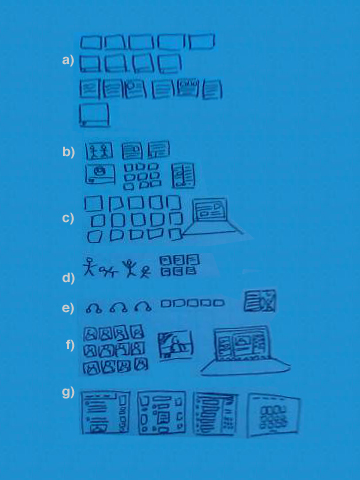 a) accionesplasticas.comb) mayatalk.wordpress.com/2007/04/11/obsessed-with-frida-kahlo/c) thewayismadebywalking.com/d) www.youtube.com/watch?v=V5sFV2xmpfAe) berlinseruv.comf) www.youtube.com/watch?v=359HwupsY1sg) mayaescobar.com
a) accionesplasticas.comb) mayatalk.wordpress.com/2007/04/11/obsessed-with-frida-kahlo/c) thewayismadebywalking.com/d) www.youtube.com/watch?v=V5sFV2xmpfAe) berlinseruv.comf) www.youtube.com/watch?v=359HwupsY1sg) mayaescobar.com
Negotiating Diaspora Identities Through New Media
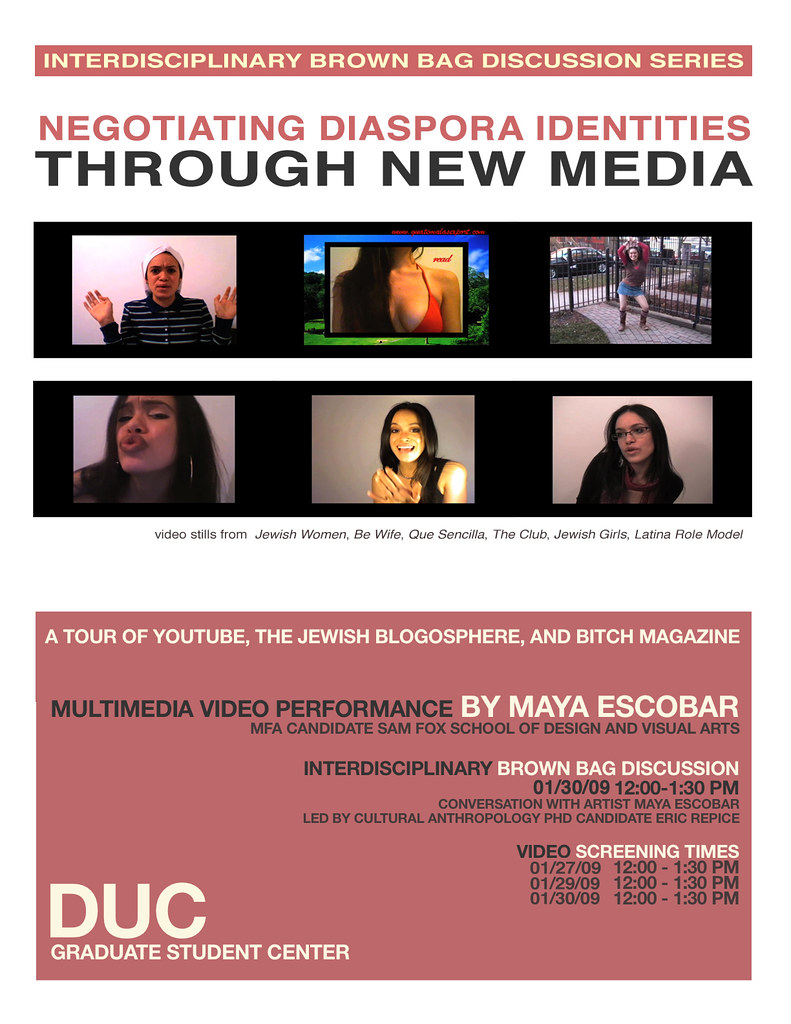 Join PhD Anthropology Candidate Eric Repice and MFA Candidate Maya Escobar in a brown bag lunch discussion concerning transnational, transcultural, and hybrid negotiations of identity through new media.How do these discussions vary between our fields?
Join PhD Anthropology Candidate Eric Repice and MFA Candidate Maya Escobar in a brown bag lunch discussion concerning transnational, transcultural, and hybrid negotiations of identity through new media.How do these discussions vary between our fields? Eric Repicefor more information on Eric Repice visit http://www.artsci.wustl.edu/~esrepice/homefor more information on Maya Escobar visit http://mayaescobar.com[youtube=http://www.youtube.com/watch?v=3li_mT--f-A][youtube=http://www.youtube.com/watch?v=G-GDmDcSH4g][youtube=http://www.youtube.com/watch?v=whLYM9o946w][youtube=http://www.youtube.com/watch?v=Vz2fhmRzCOA][youtube=http://www.youtube.com/watch?v=14bv0-dzMIc][youtube=http://www.youtube.com/watch?v=NNAxEUEE43Y]
Eric Repicefor more information on Eric Repice visit http://www.artsci.wustl.edu/~esrepice/homefor more information on Maya Escobar visit http://mayaescobar.com[youtube=http://www.youtube.com/watch?v=3li_mT--f-A][youtube=http://www.youtube.com/watch?v=G-GDmDcSH4g][youtube=http://www.youtube.com/watch?v=whLYM9o946w][youtube=http://www.youtube.com/watch?v=Vz2fhmRzCOA][youtube=http://www.youtube.com/watch?v=14bv0-dzMIc][youtube=http://www.youtube.com/watch?v=NNAxEUEE43Y]
video reel
[youtube=http://www.youtube.com/watch?v=3li_mT--f-A&hl=en]
ARTE ≠ VIDA: ACTIONS BY ARTISTS OF THE AMERICAS
Last weekend Carianne and I went to NY for the 2008 Whitney Biennial. As we expected from a survey of Contemporary American Art, not everything in the exhibition appealed to us. However neither of us was disappointed because we were not expecting to be unilaterally wowed. Upon leaving the Whitney, we got into an in-depth discussion about individuals' preconceived expectations, and the role they play in the determining interaction/interpretation/enjoyment, with actual works of art. Soon after this conversation, I was put to the test. As any young MFA student (traveling to New York) who has any hopes of some day having a career, Carianne and I were preparing to leave our hotel, to visit the elusive Chelsea Galleries, when I came upon an announcement for a show at El Museo Del Barrio, ARTE ≠ VIDA: ACTIONS BY ARTISTS OF THE AMERICAS
“Arte no es vida” surveys, for the first time ever, the vast array of performative actions created over the last half century by Latino artists in the United States and by artists working in Puerto Rico, the Dominican Republic, Cuba, Mexico, Central and South America.
Many of the works included in Arte ≠ Vida have subtle or overt political contexts and content: military dictatorships, civil wars, disappearances, invasions, brutality, censorship, civil rights struggles, immigration issues, discrimination, and economic woes have troubled the artists’ homelands continuously over the past four decades and therefore have infiltrated their consciousness. According to curator Deborah Cullen, “the exhibition title challenges the commonplace idea that art is equivalent to life, and life is art. What is proposed through these many works is that while art affirms and celebrates life with a regenerative force, and sharpens and provokes our critical senses, artistic actions which address inequalities and conflict are not equivalent to real life endured under actual repression.”
Over 75 artists and collectives are represented in Arte ≠ Vida, including ASCO, Tania Bruguera, CADA, Lygia Clark, Papo Colo, Juan Downey, Rafael Ferrer, Guillermo Gómez-Peña, Alberto Greco, Alfredo Jaar, Tony Labat, Ana Mendieta, Marta Minujin, Raphael Montañez-Ortiz, Hélio Oiticica, Tunga and contemporary practitioners including Francis Alÿs, Coco Fusco, Regina José Galindo, Teresa Margolles and Santiago Sierra. The exhibition is arranged in four major sections, in which each decade is represented by several specific themes that often cross national boundaries. 1960-1970 looks at select precursors, signaling, destructivism and neoconcretismo; 1970-1980 considers political protest, class struggle, happenings, land/body relationships and border crossing; 1980-1990 focuses upon anti-dictatorship protest and dreamscapes; and 1990-2000 references the Quincentenary, multiculturalism, postmodernism and endurance. An additional section highlights interventions that artists have carried out on television over the past 20 years. In these chronological, thematic groupings, viewers will be able to explore the interconnections among various artists’ actions as well as the surges of activities triggered by specific events in certain countries.
I didn't know what to do. This sounded to good to be true, but we also knew we were supposed to visit the Chelsea Galleries. I considered just buying the catalogue to the exhibition and skipping the show. I don't know if it was faith or instinct that got us there, but I can say with out any doubt in my mind that this was single handedly the best exhibition I have ever attended.
"¿Quién puede olvidar las huellas?," Regina Galindo. 2003.
Galindo walking through the streets of downtown Guatemala City, wetting her feet in a blood-filled bucket, and leaving a path of footprints from the Constitutional Court building to the Presidential Palace, where she was welcomed by a police battalion. The Court had just validated former dictator Efraín Ríos Montt, the country’s foremost author of genocide, as a presidential candidate.
[youtube="http://uk.youtube.com/watch?v=D46p71QdCTc"]

Oscar Bony (1941-2002) hired a working-class family at twice their going wage to pose in a Buenos Aires gallery as a living work of art
[youtube=http://uk.youtube.com/watch?v=8N5xbLtokZY]
"Arte Reembolso/Art Rebate" by Elizabeth Sisco, Louis Hock and David Avalos. 1993.


[...] "The current economic recession has been debilitating for many artists regardless of the content of their work. Since this climate is characterized by a particular hostility toward controversial art, it is especially significant that Elizabeth Sisco. Louis Hock. and David Avalos have maintained a reputation for causing trouble in San Diego. Their collaborative public art projects receive scandalous reports in local and national news media and are often used as examples of the National Endowment for the Art' inadequate standards of quality. Their most current collaborative project Art Rebate (1993) refunded $10 bills to 450 undocumented workers along the San Diego, California/Mexico border. It was commissioned by the Museum of Contemporary Art, San Diego and Centro Cultural de la Raza as part of the "La Frontera/The Border" exhibition. In response to recent attention to border relations due to NAFTA and other government policies, the artists wished to refute the popular misconception that undocumented Mexican workers do not pay taxes as well as demonstrate. albeit with a small symbolic gesture, their appreciation of the undocumented as valued members of Western states, communities. Furthermore, I believe their work has significant implications for undocumented workers from other nations, residing in other regions of the United States - Caribbean workers in Florida and New York City, for example. If the communities in which the undocumented workers from these areas work and reside could also acknowledge their common contributions, in the form of taxes among other things, then perhaps we as a society could also begin to address the crimes inflicted upon these groups and apply our democratic notions of human rights to those within our national borders. [...]
"The projects are clearly controversial. That's not an accident. It's not as if someone latches onto the projects and holds them up as problematic. We intend to create something that is provocative and engenders a public discussion. It is public art, not art in the public. The work is defined by its performance in the community. The public discussion is crucial to the project. In order to begin a discussion we initiate an action - for example, a bus poster or a $10 rebate - that starts the ball rolling. We definitely aim to draw in the broadest spectrum of people, including those in power for the discussion. Obviously the media is not a neutral mechanism for communicating the events that unfold during the projects: it has an agenda that shapes its participation in the discussion. For example, much of the language used to describe Art Rebate in the press was the same inflammatory rhetoric promoted and laid out by the politicians who had given a profile of blame to the undocumented. Similarly, the press had a hard time imagining, and therefore was unable to fairly convey, the undocumented as taxpayers. The press was invited to experience the act of rebating these signed $10 bills. They were encouraged to ask the opinion of undocumented workers concerning their status as taxpayers, but the responses failed to appear prominently in the news media. The media coverage was not a means of evaluating the project but rather a component of the project. Their viewpoints describe a conceptual social space in which they situate the taxpayer and the undocumented in different realms."
"The Parthenon of Books/Homage to Democracy, Buenos Aires," Marta Minujín. 1983.
In December 1983 the Argentine Conceptual artist Marta Minujin and a group of helpers spent 17 days building a full-scale model of the Parthenon in a public park in Buenos Aires, Roberta Smith writes. Except for a metal scaffolding, it was made almost entirely of books wrapped in plastic. All the books had been banned by one of the most oppressive juntas in the country’s history, which was just being dismantled after Argentina’s first democratic election in a decade. “The Parthenon of Books/Homage to Democracy,” as Ms. Minujin’s work was titled, stood for about three weeks. Then the public was allowed to disassemble the piece and keep the books.
partenon de libros marta minujinAvenida 9 deJulio y Avenida Santa Fe. Buenos Aires. Argentina. Concebida como un monumento a la democracia y a la educación por el arte, Partenón constaba una estructura metálica, réplica del partenón, recubierta con prohibidos durante la dictadura militar.


[...]In a similar fashion to the live human spectacles of the past, Fusco and Gomez-Peña performed the role of cultural "other" for their museum audiences. While on display the artists' "traditional" daily rituals ranged from sewing voodoo dolls, to lifting weights to watching television to working on laptop computers. During feeding time museum guards passed bananas to the artists and when the couple needed to use the bathroom they were escorted from their cage on leashes. For a small donation, Fusco could be persuaded to dance (to rap music) or both performers would pose for Polaroids. Signs assured the visitors that the Guatinauis "were a jovial and playful race, with a genuine affection for the debris of Western industrialized popular culture . . . Both of the Guatinauis are quite affectionate in the cage, seemingly uninhibited in their physical and sexual habits despite the presence of an audience." Two museum guards from local institutions stood by the cage and supplied the inquisitive visitor with additional (equally fictitious) information about the couple. An encyclopedic-looking map of the Gulf of Mexico, for instance, showed the supposed geographic location of their island. Using maps, guides, and the ambiguous museum jargon, Fusco and Gomez-Peña employed the common vocabulary of the museum world to stage their own display[...]
"Construction of a Traditional Rural Oven,'' Víctor Grippo y Jorge Gamarra. 1972.
CONSTRUCCION DE UN HORNO POPULAR PARA HACER PAN
Intención: Trasladar un objeto conocido en un determinado entorno y por determinada gente, a otro entorno transitado por otro tipo de personas.Objeto: Revalorizar un elemento de uso cotidiano, lo que implica, además del aspecto constructivo escultórico, una actitud.Acción:a) Construcción del Hornob) Fabricación del Panc) Partición del Pan.Resultante pedagógica: Describir el proceso de construcción del Horno y de la fabricación del Pan. Distribuir una hoja. Será posible la participación del público mediante un intercambio de información.
"Untitled (Body Tracks),'' Ana Mendieta. 1974.

Bitch Magazine
Acciones Plásticas was discussed in current issue of Bitch Magazine Lost and Found #38. The article is entitled The Princess Diaries: In an Age of Ostentation the J.A.P. is Back written by Julia Appel, a rabbinical student at Hebrew College.To view the full article (pdf version) click here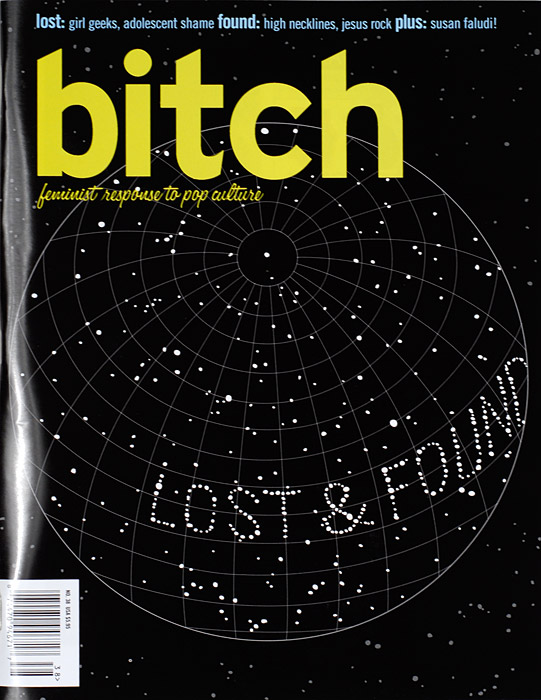
One blogger on Jewschool questioned the artistic success of a new piece by a performance artist named Maya Escobar entitled Acciones Plasticas (Plastic Dolls), in which the artist impersonates in short video segments various stereotypes that make up her identity. Her send-up of the J.A.P. was familiar to me from my years spent in a heavily Jewish, upper-middle-class suburb of Boston. Escobar's J.A.P. flips her straight dark hair and fiddles with her silver jewelry as she talks insipidly about her high-school popularity and rejection of male suitors. The blogger wrote by way of illustration, "She...nails the J.A.P. with a monologue so infuriatingly vapid and unaware it's as excruciating as the real-life experience."

[...]Using the Jewish American Princess in a deadpan manner can result in a sophisticated social critique that reveals how ridiculous the stereotype itself. The key is absurdity: Take Sarah Silverman, who frequently conjures the J.A.P. in her comedy, with mixed results [...] Maya Escobar's piece also falls in this category: by contextualizing the character in her video as a "doll" she reveals how ridiculous it is to take the character seriously. But what about the less-successful attempts at deploying the term? The reason "J.A. P." is ripe for reclamation is because it stands at the border between resonantly hateful and outdated. Although not as widely used as it once was, it still packs a punch. Therefore, if the context is not skillfully executed, the attempt serves not to interrogate or reclaim, but rather only to perpetuate the myth[...]
Maya Escobar isn't even Jewish
UPDATE: PHOTOS
 On an almost daily basis, I receive emails from people asking if I am in fact actually Jewish. Although I do find it somewhat bizarre that they find satisfaction in my acknowledgment of what I have already stated numerous times, I usually respond. Come to think of it, the occasions where I have been accepted as a Jew (without further questioning) have been few and far between.
On an almost daily basis, I receive emails from people asking if I am in fact actually Jewish. Although I do find it somewhat bizarre that they find satisfaction in my acknowledgment of what I have already stated numerous times, I usually respond. Come to think of it, the occasions where I have been accepted as a Jew (without further questioning) have been few and far between.
- “ No you can’t be Jewish you are Hispanic”
- “You don’t look Jewish”
- “Escobar… is that a Sephardic name?”
Recently I discovered that without our knowledge, the validity of my own and my brother Gonzalo’s Jewishness has come into question (to the point where documentation has been requested) from people that we are now very close with.Below are some of the examples of comments (not emails, I do not share the content of emails without permission) from youtube:
roundedwhtcollar Am I the only one who thinks this reprobate Turd is NOT in fact a Jew? Rafaelpicc But is her las name jewish? or converted? ReptorY her last name isnt jewish. xruchy you are not jewish i guess... tus videos= cero aporte raquelita40 she's half Jewish/ half Guatemalan.nakedjanet i am also suspicious. for one thing, escobar is not a typical Jewish name. For another, Jewish girls are usually a whole lot smarter, and have a whole lot more substance, than this girl has
(from chaptzem blogspot) There is no way she is Jewish- there may be a small chance her family are anusim or something.But what gets even more bizarre is that interspersed with in those comments are horrible anti-semitic statements:
johnnycastle86xx all the jews have to die, stupid jewish puta de mierda. Que mierda que Hitler no mato a tu familia, asi tu no hubieras nacido. muerte a los judios y muerte a israel. mocrostyle3600 AnotherJewish nasty bitchmrrimfire She's an ugly cockroachfilet there's a nice Jewishcrew- club... Its re-open and called Auschwitz. the drinks are on the house!!! but only for jewish people roshanpinto13 i want to put you in a concentration camp bitch if your people want israel so bad why don’t you go there and rid the world from your hideous jewish ways
So in light of my sarcasric sense of humor I entitled this post : Maya Escobar isn’t even Jewish I wonder what will come of that statement... From Judaism 101: Who Is a Jew?
First, traditional Judaism maintains that a person is a Jew if his mother is a Jew, regardless of who his father is. The liberal movements, on the other hand, consider a person to be Jewish if either of his parents was Jewish and the child was raised Jewish. Thus, if the child of a Jewish father and a Christian mother is raised Jewish, the child is a Jew according to the Reform movement, but not according to the Orthodox movement. On the other hand, if the child of a Christian father and a Jewish mother is not raised Jewish, the child is a Jew according to the Orthodox movement, but not according to the Reform movement! The matter becomes even more complicated, because the status of that children's children also comes into question.
In my case my mother is Jewish and my father is not. Yet it is my father that pushed me to go to Hebrew school until I was 16. Rain or shine my parents have been attending Shabbat services at JRC for almost 20 years. I remember being so mad as a child that my friends got to go out on Friday nights, and I was stuck with my family not even allowed to watch TV when we got home from services. Vickie Korey left the nicest comment on my Rabbi Brant Rosen’s blog:
I remember Maya at Friday night services at JRC, sometimes listening intently, sometimes reading, but always being present. When one of the children of our extended spiritual family grows to be such a fine, thoughtful and accomplished young woman we are all proud. Gonzolo and Tina have worked hard to set a strong foundation for Maya and I am so pleased for her and her family.
A few months ago I met with my Rabbi to discuss my (art) work. During our discussion I mentioned to him how my father is feeling really nervous about me having an orthodox wedding where he will not be included in the ceremony. Brant said something to me that really touched my heart. Your father is the essence of what a Jew is, he is a stranger in a strange land. I agree with him whole-heartedly, and if you ask most JRC members I am sure they would agree as well. However that does not change the fact that he is not considered to be Jewish by our neighbors, and even if he converted, to them it would not be halakhic unless he went through orthodox conversion. So who is a Jew? Who determines this?As I stated in a previous post I will be working as the art director this summer for Camp JRF. I am in the process of creating this summer’s curriculum that will be geared towards answering these very questions and challenging notions of Jewish Identity. Below is a very rough sketch of my plan…. (Please let me know if you have any suggestions, or would be interested in contributing any resources) The Changing Face of Jewish Identity: an exploration of self and what it means to be a Jew in our contemporary societyTo introduce the concept of a changing Jewish Identity will discuss the following:
- How do we define ourselves/ how do others define us?
- Who is a Jew?
- Can someone be more or less Jewish/ who decides this?
- What is our role in society?
- What characteristics make up a Jew?
Mediums Mixed media sculpture Art Exhibitions The Jewish Identity Project Too Jewish Challenging Tradition Identities Written Works by Ilan Stavans Achy Obejas Rebecca Walker Campers will produce mixed media sculptures that reflect their perception of what it means to be a JewPre- Activities:
- We will begin as an ice breaker/ intro to project identifying the characteristics that make up Jews.
- Followed by a discussion on contemporary representations of Jews in Popular culture
Project Campers working in groups of 3-4 will have the option of creating either abstract or representational mixed media sculptures that to them represent Jewish identity. Prior to the construction of their piece students will need to create a (flexible) proposal that outlines their piece.
- Will it be site specific (interact with a certain location)?
- What form will it take?
- Will it have a function?
- What materials will be used based on the above?
If they end up going with more representational sculptures I thought it would be really cool to photograph the sculptures and to place them in various Jewish settings and non-Jewish settings (baseball stadium, temple, Shabbat dinner, work, school....)
